News
Australia's clean energy storage market is growing at a speed that other countries are struggling to keep up with. The market has always been forward thinking and proactive. Now, South Korean company, LG Chem is using Australia as their platform, to launch their new battery storage solution. LG Chem's energy storage units have already been previewed but are finally ready to launch to consumers.
The company had initially announced that it would make 600 Residental Energy Storage Units (RESU6.4EX) available to "local distributors" in Australia, last year. Now, the company is saying it will have produced 3,000 units in 2016 and will continue to produce more energy storage units in 2017.  This signals that the company is entering the market and is here to stay. They are convinced that the energy storage market will be growing in the upcoming years. The company has been quoted saying that Australia is in a "critical solar decade".
This signals that the company is entering the market and is here to stay. They are convinced that the energy storage market will be growing in the upcoming years. The company has been quoted saying that Australia is in a "critical solar decade".
"We see a quiet solar revolution brewing and we strongly believe that LG Chem will be at the forefront of this transformation to help unlock the true value of solar storage and better enable the ecosystem. We welcome competition too. We are positive that when more people adopt the RESU6.4EX in Australia, the market will appreciate the quality, efficiency and cost competitiveness of our offering," said Changwan Choi, LG Chem's manager of Australian business development.
The battery storage units start at 3.2kWh versions and can be stacked to reach outputs of 9.6kWh and 12kWh in energy storage. The unit weighs only 132lbs (60 kg). The rumor that currently exists is that LG Chem's battery is the most affordable battery on the market, according to the dollar to kilowatt-hour conversion. The battery will reportedly cost close to $8,000.
LG Chem says their new energy storage units are lightweight and conveniently compact. The batteries are also stackable and connectable so that a stronger megawatt output can be achieved. The company claims to have the largest manufacturing facility in the world and are certain that that will drive the prices of their battery storage units down. They will also integrate their battery technology into utility and business operations as well.
Volkswagen has also been rumored to be working with LG Chem in a joint venture that could see their cars being powered by the battery technology. The auto manufacturer could be looking to put batteries into between 2 million and 3 million vehicles by 2025. According to Bloomberg, four Asian companies including Panasonic and LG Chem own 80% of the battery market in Asian-Pacific territories.
"Batery technology is a key competence for electric mobility, which will see its breakthrough toward a mass market in coming years," Volkswagen said in a statement.
Now for the engineers that are interested in installing one of LG Chem's home storage units, there is already an installation video for it:
The global smart energy market will see seven vendors rising up above the rest, to capitalize on the new era of clean energy production with an added layer of digitization as the Industrial Internet of Things. The seven leading vendors were determined by a study done by Technavio, which considered energy companies that provided services in "smart-grid, HEMS, digital oil fields" and leading solar technologies, all in the name of clean and smart energy production. The efficiency of these power companies was also considered. Technavio estimates that these seven vendors will lead the market from 2016 to 2020. Thus, we begin our series titled Global Smart Energy 2016 to 2020 and catch up with these seven energy companies to see the work they are doing in energy sectors and to see what qualifies them as the top vendors for global smart energy.
 Sensus
Sensus
Sensus' daily concerns are utilities, cities, industrial complexes and campuses. The company prides itself on taking energy infrastructure into the fourth industrial revolution. Now, for the third year in a row, the company has been named the Best Smart Grid Solution. This is according to multiple municipalities offering their opinions at the Municipal Smart Grid Summit (MSGS).
Sensus offers utilities a solution named the FlexNet Communication Network. The network is a utility management system that includes management software which employs systems of smart meters, encouraging more efficient output for municipalities. Sensus claims the network leads to two-times the amount of power output, compared to cities that don't use smart-alternatives. The company supplies smart water networks called AquaSense. Additionally, there are smart metering applications for gas and electricity as well.
The director of the electric market and smart grid technologies at Sensus, Greg Myers, said: "The Sensus FlexNet communication platform is the foundation that all the applications are built on, that enable gas, water, and electric utilities to achieve operational efficiencies and resource conservation."
Sensus says the smart metering, distribution automation and IoT-connected mechanisms within their FlexNet system ensures that two-way communication between provider and consumer is possible - all in the name of efficiency. Joining multiple industries together in one collaborative network is something that needs to happen so that a city can be considered a smart-city, and Sensus is allegedly the choice for some of the top municipalities.
"The FlexNet system has the proven ability to easily adapt to evolving standards like ANSI C12.19, encryption, smart energy profile, DNP 3.0, and IPv6 which provides comfort that as new standards evolve, FlexNet can evolve with them," Myers added.
The FlexNet system also claims it can perform optimally during hurricanes and tornadoes, making their system attractive to American utilities. Through the analysis of immediately available data, smart cities can ensure premium efficiency for their smart grid solutions. For more clarity on how this is possible, see the video below:
Amidst an Australian election and a British exit from the European Union, engineering has never been more relevant to politics. Engineering industries are the ones that keep a country running, and those industries need to stay afloat in uncertain political environments. We have recently reported on how important STEM-related industries and education is to the future of Australia's GDP. We have also recently focused on how a Brexit has forced engineering industries in the UK to link arms and negotiate the best possible deal in the EU-Exit. What is apparent in the current political climate, is that engineering is one of the more important societal mechanisms.
 Malcolm Turnbull has secured a second term as Prime Minister of Australia, along with the Liberal Party of Australia. During his campaign trail, he asserted that STEM subjects would be made compulsory for all students in Australia. The importance of STEM industries for Australia's economy has been made known - multiple times - in the lead up to the election. Price Waterhouse Coopers warned that if STEM industries faltered, Australia could see losses of up to $43 billion in the annual gross domestic product. Australia's engineering industries that have notably influenced policies within politics have been the liquefied natural gas industry and the clean, renewable energies market.
Malcolm Turnbull has secured a second term as Prime Minister of Australia, along with the Liberal Party of Australia. During his campaign trail, he asserted that STEM subjects would be made compulsory for all students in Australia. The importance of STEM industries for Australia's economy has been made known - multiple times - in the lead up to the election. Price Waterhouse Coopers warned that if STEM industries faltered, Australia could see losses of up to $43 billion in the annual gross domestic product. Australia's engineering industries that have notably influenced policies within politics have been the liquefied natural gas industry and the clean, renewable energies market.
The Dean of Engineering at the Engineering Institute of Technology, Steve Mackay, in the latest episode of his YouTube series, The Engineering News Network, spoke of how engineers could play a significant role in their respective communities. He said: "As engineering professionals, you really do need to get involved in politics, local community affairs from a technical, engineering point of view. You do have a major contribution to make, whether it's your local community, your little small village or town, whether it's working on the sewage works or helping with decisions of power."
 An example of engineers making decisions that could affect policy was seen in Europe in the last two weeks. In the current market of uncertainty, Siemens decided to halt any new orders whilst the aftermath of the Brexit referendum was measured. This cast a cloud of doubt on the future clean energy policies of David Cameron's government. Siemens eventually reversed their halt on new orders and have gone forward with engineering operations in the country. However, the decisions of engineers could have caused Britain to go through a tumultuous time in regards to keeping their clean energy policies in check.
An example of engineers making decisions that could affect policy was seen in Europe in the last two weeks. In the current market of uncertainty, Siemens decided to halt any new orders whilst the aftermath of the Brexit referendum was measured. This cast a cloud of doubt on the future clean energy policies of David Cameron's government. Siemens eventually reversed their halt on new orders and have gone forward with engineering operations in the country. However, the decisions of engineers could have caused Britain to go through a tumultuous time in regards to keeping their clean energy policies in check.
"You have to get involved because you as engineering professionals have something more than most of these people in these parliaments have and that is that you are considerably more objective in what you do. A lot of the parliaments are riddled with lawyers, accountants and people that perhaps don't have the necessary technical knowledge to make considered technical decisions. Obviously, engineers have got potential problems ; building nuclear power plants, contaminating water and things like that, that we need to avoid. But really, you do have a major contribution," Mackay concluded.
Want to go work in Singapore? According to veteran engineers, Singapore's engineers are flocking to other industries. This has caused a shortage of engineers in key industries that require them, most notably in telecommunications and railway engineering applications. The dean of the engineering faculty at the National University of Singapore, Professor Chua Kee Chaing, has said there is a lack of engineering talent in critical infrastructure industries such as broadband and power networks. There has been a host of train breakdowns due to power issues across Singapore.
 The problem, according to Singapore's Prime Minister Lee Hsien Loong, is the tertiary engineering education in the country. At the 50th anniversary celebration of the Institution of Engineers Singapore, the PM warned of the dire situation the country was experiencing.
The problem, according to Singapore's Prime Minister Lee Hsien Loong, is the tertiary engineering education in the country. At the 50th anniversary celebration of the Institution of Engineers Singapore, the PM warned of the dire situation the country was experiencing.
Experts have suggested that other industries are needing the expertise of engineers. Finance and business industries have been luring students in with higher salaries, leaving critical infrastructure industries without engineers. A better pay cheque is a significant factor that could see prospective engineers lending their skill sets elsewhere, taking on other professions.
"Other factors include the lack of effective career planning and job rotation. For instance, not all engineers want to remain engineers, but may want to become senior managers," said the president of the Institution of Engineers Singapore, Edwin Khew. He added that banks could probably pay engineers 30 percent more than critical infrastructure industries.
Professor Chua also mentions that infrastructure industries are not able to produce the same salaries as banking and finance industries.
According to the Straits Times, even when engineering was chosen as a field of study, the students still landed in banking-related jobs. Engineering students in Singapore have confirmed that no matter what their qualifications were, some industries were just hiring to hire, as long as qualifications were held. Veteran engineers are now saying that government needs to pump more money into engineering salaries in critical infrastructure so that there is not a lack of engineers in industries that need them the most.
"A lot of students I talk to say they want to do good in society. Maybe we don't do our outreach well enough. For example, when engineers bring clean water technology to underdeveloped economies, eliminating diseases, the impact is tremendous. Increasingly, we want our students to go out to more disadvantaged communities," Prof Chua concluded.
Source: The Straits Times
Advanced Microgrid Solutions (AMS) is a company that integrates clean renewable energy into buildings through supplying energy storage units. Their solutions ensure that businesses use less utility grid energy. The company operates out of San Francisco, California. They are teaming up with Macquarie Group, an investment banking, and diversified financial services group. Macquarie will be supplying the energy giant $200 million to kick-start new energy storage projects.
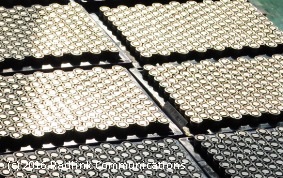 Chief Executive of AMS, Susan Kennedy, says the funding will ensure that large infrastructure development in energy storage will take place as a result. The projects will see California getting energy storage technologies. The first projects for the two companies will be building 300 megawatt-hour energy producing facilities. According to Clean Technica,the global annual storage market last year reached 700 megawatt-hours. Therefore, the facilities that will be built as a result of the collaboration are going to be quite sizeable. AMS have been taking business office space into the hybrid future. Using Tesla PowerWalls, the company powers buildings through alternative methods, leading to less grid demand. The energy storage market is expected to grow to a demand of 14 GWh by 2020. Thus, deals like these need to become more frequent if the world is to keep up with stationary storage market demand.
Chief Executive of AMS, Susan Kennedy, says the funding will ensure that large infrastructure development in energy storage will take place as a result. The projects will see California getting energy storage technologies. The first projects for the two companies will be building 300 megawatt-hour energy producing facilities. According to Clean Technica,the global annual storage market last year reached 700 megawatt-hours. Therefore, the facilities that will be built as a result of the collaboration are going to be quite sizeable. AMS have been taking business office space into the hybrid future. Using Tesla PowerWalls, the company powers buildings through alternative methods, leading to less grid demand. The energy storage market is expected to grow to a demand of 14 GWh by 2020. Thus, deals like these need to become more frequent if the world is to keep up with stationary storage market demand.
Rob Kupchak, the head of US Power, Utilities and Renewables for Macquarie Capital said: "AMS's focus on contracted, grid-scale energy storage projects stands out amongst developers forging a path in the energy storage space. The next decade is likely to see huge changes in the mix of energy consumed across the globe, and we see energy storage rapidly emerging as a growth market in the next generation of energy infrastructure."
A month ago, Bloomberg's New Energy Finance New Energy Outlook Report 2016 report was released and indicated that the energy storage market would be valued at $250 billion by 2040. The report indicated that the falling prices of lithium and the falling price of battery technology would mean the market would grow considerably.
"Macquarie Capital is the gold standard for investment in critical infrastructure. Combining our innovative designs and technology with Macquarie's development and financing expertise will enable us to deliver best-in-class storage solutions and build tomorrow's energy grid," said Kelly Warner, President of AMS.
The Hay Group division of Korn Ferry, a recruitment firm dedicated to supplying people and organizations with work advice, has conducted research into how much more engineers make than their peers. The study looked at 42,500 graduate engineers and students in 770 different organizations in the United Kingdom. The study found that those who had graduated with STEM  (science, technology, engineering, and mathematics) degrees earned 20% more than their peers. The study found that engineers and software developers were the highest paid STEM professionals in the UK. The average starting salary for a graduate was $34,208, however for engineering professionals, their salaries saw increases of 17%. Meaning engineering graduates could look forward to about $39,936.
(science, technology, engineering, and mathematics) degrees earned 20% more than their peers. The study found that engineers and software developers were the highest paid STEM professionals in the UK. The average starting salary for a graduate was $34,208, however for engineering professionals, their salaries saw increases of 17%. Meaning engineering graduates could look forward to about $39,936.
The top five countries that promise the best starting salaries after graduating from university are:
| Country of Graduates | Salary |
| Germany | $52,997 |
| United States | $47,711 |
| Australia | $46848 |
| Netherlands | $45,098 |
| United Kingdom | $34,236 |
Theoretically, every country's engineers should make 20% more than their peers. So all of the aforementioned salaries can be increased, however, there are many other factors to consider. The study illustrates this by saying an engineer in the United Kingdom would make more money working in London than they would in the West Midlands.
Where is the demand for STEM graduates in the UK? In the digital sector. Vivienne Dykstra, the global graduate practice leader for Korn Ferry said that the digital sector currently makes up 10% of the United Kingdom's gross domestic product and is sorely in need of STEM-graduates.
"This demand is being reflected in the salaries that newly qualified students can command. With digitally savvy talent at a premium, the graduate recruitment market is a competitive place. Employers need to look at ways to differentiate themselves. Alongside providing opportunities to develop and grow, it's critical businesses offer strong starting salaries to really stand out of the crowd," Dykstra added.
Thus, it depends on what kind of engineering you go into and where you get into it. Some branches of engineering make more money than other branches. And, if you're looking for employment and a big salary, being willing to relocate might also be something to consider.
Source: Korn Ferry
Industrial workers have to operate some heavy machinery and carry some heavy equipment. Now, a new glove that makes it easier to do those things is here. Engineers from General Motors have shown off a new innovation they have been working on for quite some time. A robotic glove turned industrial glove. The glove is a collaborative project between General Motors and NASA. The glove is called the RoboGlove. It was a joint venture between GM and NASA that took nine years to perfect. The gloves were initially designed for the use of the Robonaut 2 that works aboard the International Space Station. The gloves were designed four years ago but are now being re-purposed for industrial operations.
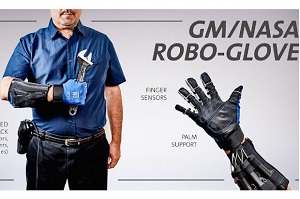 Marty Linn, GM's Principal Engineer of Robotics, said: "This was really inspired by the work that was done on the hands of R-2. The unique thing about R-2 is its hands and its ability to manipulate objects and to do work. We've taken the same sort of technology, the tendon driven actuators and the sensors and translated that from the robot into a glove that a human operator could wear."
Marty Linn, GM's Principal Engineer of Robotics, said: "This was really inspired by the work that was done on the hands of R-2. The unique thing about R-2 is its hands and its ability to manipulate objects and to do work. We've taken the same sort of technology, the tendon driven actuators and the sensors and translated that from the robot into a glove that a human operator could wear."
The gloves will be used by workers with the purpose of reducing the amount of fatigue that occurs in heavy lifting and working with tools. The technology was trademarked under the name 'SEM' which translates to Soft Extra Muscle technology. Another company that wants to utilize the technology is Bioservo Technologies. They intend to use the glove for biomedical and industrial purposes.
In a statement, Tomas War, CEO of Bioservo Technologies, said: "Combining the best of three worlds – space technology from NASA, engineering from GM and 'medtech from Bioservo – in a new industrial glove could lead to industrial scale use of the technology."
"This glove provides additional grip force on the order of ten pounds to be able to help the operator do their job longer and better," Linn added. The engineers say the gloves have a grasp force that makes industrial heavy-lifting much easier. It significantly reduces the force a worker needs to exert in industrial operations.
To see how the RoboGlove could be used in the industrial world, take a look at the video below:
Research group Gartner tell us that 6.4 billion devices are soon to be connected to the Internet of Things this year. That will be 30 percent more than 2015. This would mean that 5 million devices will be connected to the internet every single day. In 2020, the number is expected to grow to 20.8 billion connected things. Some of these devices will be connected to the Industrial Internet of Things. IIoT-connected devices will ensure that industrial automation reaches new heights, redefining industrial operations and leading to new levels of efficiency.
 Honeywell has launched a new programmable logic controller (PLC) called the ControlEdge. It is equipped to deal with the IIoT and ensure that industrial devices all work in tandem with unprecedented efficiency. With built-in cybersecurity, the PLC promises to capitalize on the IIoT and take industry into what has been defined as Industrie 4.0.
Honeywell has launched a new programmable logic controller (PLC) called the ControlEdge. It is equipped to deal with the IIoT and ensure that industrial devices all work in tandem with unprecedented efficiency. With built-in cybersecurity, the PLC promises to capitalize on the IIoT and take industry into what has been defined as Industrie 4.0.
Andrew Brodie, Global Controls Leader, in a roundtable discussion on the future of IIoT, said: "IIoT has the potential to be the most significant development in automation systems since the introduction of distributed control systems. It offers a wide range of potential uses and benefits, enabling business to leverage the vast amount of data provided by modern automation and control systems."
He lists the benefits of an IIoT-controlled set up within an industrial operation. He summarizes the huge advantages:
- Providing operations personnel with improved remote monitoring
- Diagnostic and asset management capabilities
- Enhancing data collection - even in the most dispersed enterprises
- Improved decisions about the actual health of assets
- Reducing the time and effort for configuration and commissioning
- Minimizing the need to troubleshoot device issues in the field
- Bringing new production fields online faster and improving collaboration across the company
Honeywell says their new PLC will assist industrial operations with all of the aforementioned necessities. Access to immediate data makes this PLC a productive tool that engineers can work with. The company has sold the Experion PKS automation systems to industrial operators, most notably to an Oil and Gas company named Kuban in Russia. The automation systems will assist with performance and promises to cut costs. The automation system employs the ControlEdge PLC, which reportedly assists with secured connectivity and integration with multiple devices across vendors. It also ensures that industrial operations can continue at an efficient level in an uncertain shift towards IIoT-connected warehouses, factories and industrial complexes.
The embedded security reportedly reduces the risk for the companies who employ the PLC. The PLC boots with something called 'Safeboot'. This scans industrial systems for any unauthorized software before industrial operations continue to ensure that no dangerous software is imposing on the systems. The PLC also has a firewall that ensures security.
Robert Alston, a cyber security technical lead at Honeywell, in a roundtable discussion on IIoT-connected PLCs, said: "Honeywell offers Industrial cybersecurity solutions and managed services that help protect the availability, safety, and reliability of industrial control systems and site operations."
Source: Honeywell
Conflict is a key part of our lives as engineering professionals. Especially these days with so much change occurring. Conflict is a verbal (or indeed non-verbal) expressed disagreement between individuals or groups. It may occur, for example, between an engineering supervisor and employee, or manager and supervisor.
Dear Colleagues
Conflict is a key part of our lives as engineering professionals. Especially these days with so much change occurring. Conflict is a verbal (or indeed non-verbal) expressed disagreement between individuals or groups. It may occur, for example, between an engineering supervisor and employee, or manager and supervisor.
And, as you all know, conflict can even exist within an individual – for example, when one part of you wants to stay at home and rest while another part of you knows you should get up and go to work (a feeling I have, when I know ‘all hell’ is breaking loose at work).
Conflict needs to be dealt with quickly and firmly. It can often be a positive thing (yes) and improve relationships, refine processes and procedures. The absence of all conflict is not necessarily a good thing. In my book, it could be the equivalent of reclining on the Titanic enjoying your daiquiri while a major catastrophe is about to unfold. When people argue and conflict is in the air, it often means that they have a stake in the outcome and deeply care about the overall team and project.
Root it out
Root cause analysis is a step-by-step technique to identify the cause of the failure or problem and in dealing with it. This is done by bringing together a team of people to investigate the failure or conflict by reviewing the evidence and building up a fault tree based around examining the last failure and tracing backwards each cause that led to the previous cause until the trail can be traced back no further. At this point, changes can be effected to eliminate this happening again.
We always blame someone else
Bear in mind in dealing with conflict an interesting piece of psychological research (from Fritz Heider) which is: We tend to attribute the successes of others and our own failures to external factors (i.e. outside our control). On the other hands, our own successes and failures of others are attributed to internal controllable factors.
Suggestions on dealing with team conflict
- Define the problem carefully
- Avoid targeting a person but focus on the problem
- Gather data and look for objective evidence
- Analyze the data
- Choose the best solution
- Implement the solution quickly and keep refining it
Some additional tools to use for your team to resolve the conflict quickly and effectively
- Attack the problem and not the person
- Focus on what can be done and not on areas where you have no control
- Encourage a team contribution and frank exchanges of opinion
- Express feelings in a way that does not blame but solves the problem
- Accept ownership appropriately for all or part of the problem
- Listen carefully and understand the other person’s point of view before stating your own
- Show respect for the other party
- Solve the problem whilst building the relationship
And if things get very heated; take a break and look for a lateral solution to the conflict or problem.
As Garth Brooks says: The greatest conflicts are not between two people but between one person and himself.
Yours in engineering learning
Steve
Mackay’s Musings – 12th July’16 #608
780, 293 readers – www.eit.edu.au/cms/news/blog-steve-mackay
South Australia is getting the push the rest of the world is in desperate need of. 25 primary schools will be the first to get a host of new upgraded science, technology, engineering, and mathematics equipment in November. The hope is that the new equipment will inspire children to continue to pursue STEM careers later on in life. The funding for the project will top AU$250 million and will be coming out of the State Budget. 77 primary schools and 44 high schools will reportedly see upgrades to their STEM labs once the project is complete.
 Every primary school gets up to $1 million, whilst every high school gets up to $2.5 million. The move comes at a time where Australian education has been criticised for its recent poor mathematics results. According to Adelaide Now, some schools will be constructing classrooms with the money and others will be using the money to upgrade equipment needed to teach STEM-related content to students. The website says this will include "robotics labs, laser cutters, 3D printers, web cameras, touchscreen TVs" and spaces for civil engineering construction projects. Looks like we've got the next wave of successful engineers coming our way.
Every primary school gets up to $1 million, whilst every high school gets up to $2.5 million. The move comes at a time where Australian education has been criticised for its recent poor mathematics results. According to Adelaide Now, some schools will be constructing classrooms with the money and others will be using the money to upgrade equipment needed to teach STEM-related content to students. The website says this will include "robotics labs, laser cutters, 3D printers, web cameras, touchscreen TVs" and spaces for civil engineering construction projects. Looks like we've got the next wave of successful engineers coming our way.
"These schools are overdue - they deserve this. We need robotic equipment, we need technological equipment, we need electronics and facilities that can ignite children's enthusiasm about STEM (courses)," said Dr. Susan Close, Education Minister.
The move could curb the amount of children who retain an interest in engineering and avoid the engineering spiral of death. The spiral of death is when a student loses interest in engineering before high school and cannot recover the love for engineering, which potentially hurts their future employment prospects. The other worry is that there are not enough teachers in Australia who cater to STEM-related fields.
In addition to the 250 million project, the Australian Academy of Science is in the process of implementing a ten-year plan to implement mathematics after the Australian Mathematical Sciences Insitute reported that only 14 percent of Australia's STEM degrees have maths as a prerequisite for students. PWC Australia also recently published a report that said if STEM was not focused on soon, Australia could lose AU$57.4 billion in gross domestic product in a year.
Transparency Market Research has issued a new report on the global supervisory control and data acquisition (SCADA) systems market. They have been tracking the market since 2014 and will continue to do so until 2020. The report is titled 'Supervisory Control and Data Acquisition (SCADA) Market - Global Industry Analysis, Size, Share, Growth, Trends, and Forecast 2020'. SCADA systems run all of the major players in industry. They're used in substations, oil and gas, water distribution, telecommunications, manufacturing, the list goes on. They are brutally important to industrial operations.
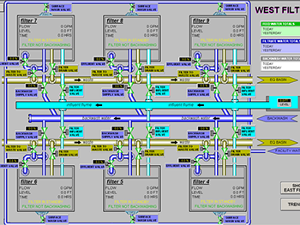 The report says that the market was valued at $23 billion in 2013. By 2020, the report estimates the market will reach a value of $32.7 billion by 2020. This would mean the market would have a compound annual growth rate of 5% between 2014 and 2020.
The report says that the market was valued at $23 billion in 2013. By 2020, the report estimates the market will reach a value of $32.7 billion by 2020. This would mean the market would have a compound annual growth rate of 5% between 2014 and 2020.
To indicate how important SCADA systems are to the future of industrial control systems, a recent report by BCC Research can be quoted. They say the industrial robotics market will be valued at $31.5 billion by 2021.
What industries are utilizing SCADA systems to their full potentials in the current market? First of all, the electric power generation sector, powering smart grids and turning cities into efficient energy consuming territories. The report says countries that have been incorporating smart-energy with SCADA systems are India and China. Then oil and gas, manufacturing, automotive, pharmaceuticals, telecommunications, food and beverage, water and wastewater, and transportation. The report says substations and energy applications account for 17.7% of the market in 2013. That number will undoubtedly grow due to the amount of energy-producing applications that are being invented in the smart-grid age.
The United States was found to be the top buyer in the market due to having 38.8% of the market share. The market share has been explained by the U.S's craving for automation within factories, and the energy sector growing rapidly. Furthermore, the U.S.'s oil and gas sectors are still very active. All of these industries require SCADA systems.
Asia Pacific areas were the second biggest market for SCADA systems. China's investment into industrial automation will see the SCADA systems market growing as well. Europe was third and the rest of the world followed after that.
Structural engineers work in the field of analyzing structures. They are the hunter-gatherers of finding forces, stresses and deflections that all work towards building a strong structure. They also study the design of structures. They will know which materials work best and how they need to be positioned to ensure that a structure doesn't come tumbling down. This means analyzing the distribution of load in a structure. The functionality of a structure also needs to be considered so that it is not built in a place where it does not serve a function.
There are also design principles in structural engineering. Once again, choosing which materials a structure will be able to stand on is imperative. The engineer needs to think of the most efficient building materials that will ensure a sturdy structure. The structural engineer needs to focus on the safety of the project as well.This is something that wasn't done in South Africa in 2015. On October 14th, a temporary steel structure came crashing down onto a busy M1 freeway in Sandton, Johannesburg. It was said that a strong westerly wind caused a collapse. The collapse killed two people and injured 19.
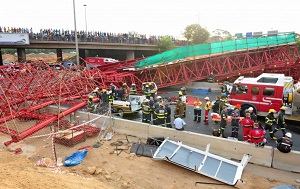 Now, months later, the results of an investigation into the bridge collapse is being made available to the media. The company in charge of the build was an engineering and design construction company named Murray and Roberts. Professor Roelof Mostert, the head of the department of material science and metallurgical engineering at the University of Pretoria has issued his report of what happened to the structure based on his investigations.
Now, months later, the results of an investigation into the bridge collapse is being made available to the media. The company in charge of the build was an engineering and design construction company named Murray and Roberts. Professor Roelof Mostert, the head of the department of material science and metallurgical engineering at the University of Pretoria has issued his report of what happened to the structure based on his investigations.
"Essentially, the structure appeared to separate at the median supports. That is the center of the highway, where the lattice girders on the eastern side remained stationary for a while but the lattice girders on the western side moved towards the west and separated from those on the eastern side and landed on the road," said Gregory Harington, a structural engineer, speaking to Moneyweb about Prof Mostert's report.
The report further said that the swivel clamps used in the operation were not able to keep both sides of the scaffolding upright. The swivel clamps were supposed to connect scaffold tubes together. But, a collection of older clamps and newer clamps led to the structures collapse. The older clamps had a kind of thread that led to less clamping force. The force of the wind was too much for the clamps to handle, and due to the lack of tightening on-site, the temporary structure collapsed. The professor is saying "poor workmanship" led to the collapse, along with the strength of the wind.
Video Source: Moneyweb
The global smart energy market will see seven vendors rising up above the rest, to capitalize on the new era of clean energy production with an added layer of digitization as the Industrial Internet of Things. The seven leading vendors were determined by a study done by Technavio, which considered energy companies that provided services in "smart-grid, HEMS, digital oil fields" and leading solar technologies, all in the name of clean and smart energy production. The efficiency of these power companies was also considered. Technavio estimates that these seven vendors will lead the market from 2016 to 2020. Thus, we begin our series titled Global Smart Energy 2016 to 2020 and catch up with these seven energy companies to see the work they are doing in energy sectors and to see what qualifies them as the top vendors for global smart energy.
Landis + Gyr
It's easy to see why Landis + Gyr are word leaders in global smart energy production. The company has provided a host of countries smart electricity technologies. Their slogan is, "manage energy better," and it is clear to see they do that through giving the consumer the power. They offer a host of smart metering technologies to ensure that the consumer knows and understands how much electricity is being used, and how much can be saved.
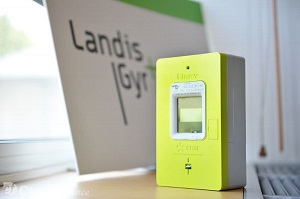 They have a global portfolio that encourages increased efficiency in energy management. In the Netherlands, they have installed smart street lighting to ensure lights are only being used when brutally necessary. They have installed smart-grid technologies including large-scale battery and PV technologies in Japan and the United States. In Estonia, they have installed 630,000 residential metering points to ensure consumers get the right amount of electricity based on how much they have paid.
They have a global portfolio that encourages increased efficiency in energy management. In the Netherlands, they have installed smart street lighting to ensure lights are only being used when brutally necessary. They have installed smart-grid technologies including large-scale battery and PV technologies in Japan and the United States. In Estonia, they have installed 630,000 residential metering points to ensure consumers get the right amount of electricity based on how much they have paid.
In Slovenia, the company employs what they call a "virtual power plant" that supplies 60MW to the cyber-grid. The transmission system operator installs the virtual cyber-grid which assists with regulating and balancing power that gets sent to industrial and consumer-based demands.
In France, a $77.8 million project has ensured that Landis + Gyr's smart meters make their way into French customers' houses. The meters are built in an automated factory based on engineers' designs. The money for the project was provided by the European Regional Development Fund, that is ensuring the smart metering technology makes it further into France.
“Landis+Gyr is proud to have been selected by ERDF as one of the main suppliers for this ambitious programme to bring smart meter technology across France”, said Andreas Umbach, Landis+Gyr’s President and CEO.“We look forward to helping them realize the goal of empowering their customers to better manage their energy consumption.”
The deal sets the record for the world's largest smart metering rollout.
The company also assists cities in becoming smarter. In Yokohama City, Japan, Landis + Gyr is in charge of making the city smarter, energy wise. They have installed home energy management systems, central management systems for smart grids, electric vehicle charging stations and SCADA systems that keeps an eye on the energy production of the city. The company also supplies advanced metering options to Denmark, Rome, Spanish customers. They also specialize in smart gas technologies in Britain.
Source: Landis + Gyr
The Twinkie is America's snack. Or, at least it used to be. If anything, it is a wonderfully engineered bit of a pastry for people who desire a cake with a bit of stuffing - or is that icing? Regardless, the company who make Twinkies, Hostess, almost went bankrupt twice. Just imagine if you were an American living in a world without Twinkies. In 2013, as Hostess admitted to bankruptcy due to employee and union "arrangements", the company was bought by another company named Apollo. Now, the company is going public and is valued at $2.3 billion. How did they turn it around? The answer is: Automation.
The company now at the helm of the Twinkies brand has let go of most of their employees. Five years  ago the company had 8,000 employees, now they have 1,170. The money that would've gone to those other 6,830 people was spent on revamping their industrial machinery and industrial ovens. $130 million was pumped into automation, making the company re-fire ovens that used to be used by 22,000 workers (in 40 bakeries) when the company was in its heyday.
ago the company had 8,000 employees, now they have 1,170. The money that would've gone to those other 6,830 people was spent on revamping their industrial machinery and industrial ovens. $130 million was pumped into automation, making the company re-fire ovens that used to be used by 22,000 workers (in 40 bakeries) when the company was in its heyday.
A robotic takeover of food industries is not a foreign idea and is happening every day. Hostess was crippled by employing humans. According to Forbes, the company had 372 bargaining contracts for workers, 5,500 delivery routes and "a vast production system" all headed up by humans. Now, with letting go of 94% of their employees and employing automated industrial food technology, they have saved the company.
The new factories that Twinkies are made in use a $20 million piece of automation tech called the Auto-Bake system. The industrial ovens use state-of-the-art PLC (programmable logic controller) systems to fully automate the production line. Robotic arms are also used to package the Twinkies into boxes and ensure that 1 million Twinkies make it out of the factory per day. That's 400 million a year. That was a year ago, the CEOs want to now employ a second Auto-Bake system and double the output. This would ensure that they produce more Twinkies than ever before in history.
Back in May, former CEO of McDonalds Ed Rensi said: "I was at the National Restaurant Show yesterday and if you look at the robotic devices that are coming into the restaurant industry -- it's cheaper to buy a $35,000 robotic arm than it is to hire an employee who's inefficient making $15 an hour bagging French fries -- it's nonsense and it's very destructive and it's inflationary and it's going to cause a job loss across [the United States] like you're not going to believe."
The harsh criticism of the food industry by Rensi can explain why it is is more lucrative for Hostess to employ robotic employees instead of union-affiliated employees that sent the company into a death-spiral years before.
To see how the Auto-Bake system works, take a look at the video below:
The global smart energy market will see seven vendors rising up above the rest, to capitalize on the new era of clean energy production with an added layer of digitization as the Industrial Internet of Things. The seven leading vendors were determined by a study done by Technavio, which considered energy companies that provided services in "smart-grid, HEMS, digital oil fields" and leading solar technologies, all in the name of clean and smart energy production. The efficiency of these power companies was also considered. Technavio estimates that these seven vendors will lead the market from 2016 to 2020. Thus, we begin our series titled Global Smart Energy 2016 to 2020 and catch up with these seven energy companies to see the work they are doing in energy sectors and to see what qualifies them as the top vendors for global smart energy.
ABB
The hottest town in Australia is said to be Marble Bar. It is in the Pilbara region in north-western Australia. The town set a record when the temperature reached 100oF and stayed there for 160 consecutive days. So, needless to say, the town get's a lot of sun. It seems to be the perfect spot for solar panels.
ABB supply microgrid solutions - named ABB Microgrid Plus technology- that combine the power of diesel generators and the power of solar panels. It ensures that mining operations and endeavours of the like are mostly powered by renewable energy. The ABB engineers say that the town can now be powered by renewable energy 60% of the time, with their microgrid applications. The solar array supplies 320 kilowatts to the town, whilst the diesel generators supply 320 kilowatts.
 "Traditionally, we would have had a diesel power station here, supplying the grid. In a microgrid you've got multiple sources of energy, in this case here, you've got solar power plus the diesel. The goal here is for our microgrid control system to minimize the diesel and maximise the solar," said Heath Lang, a senior engineer from ABB.
"Traditionally, we would have had a diesel power station here, supplying the grid. In a microgrid you've got multiple sources of energy, in this case here, you've got solar power plus the diesel. The goal here is for our microgrid control system to minimize the diesel and maximise the solar," said Heath Lang, a senior engineer from ABB.
ABB say that they have 80 similar installations operating all over the world. In the case of Marble Bar, the town saves 40% of the diesel fuel it would have used (240,000 litres of diesel fuel) if they didn't have the solar panels. This microgrid solution ensures that 1,100 tonnes of greenhouse gases are avoided.
ABB's Microgrid Solutions are bringing clean, renewable power to remote, hard-to-reach places in the world. They estimate there are 1.3 billion people living in remote parts of the world, and those are the ones they want to reach.
"ABB's unique microgrid solutions enable very high levels of wind and solar power penetration in isolated diesel-powered grids. This solution calculates the most economical power configuration, ensuring a proper balance of supply and demand that maximizes renewable energy integration, providing for up to 100% renewable penetration and the highest level of stability and reliability," ABB said in a statement.
Their solution can be used for microgrid communities (much like Marble Bar), integrated solutions for businesses or microgrids for industry applications like mining operations etcetera.
Source: ABB
A recent report by Research and Markets indicated that wind and solar generated 77 percent of the global renewable energy in 2015. The American Wind Energy Association says that wind energy currently powers up to 20 million homes in the United States. Wind farms are gaining popularity all over the world, equipped with row upon row of wind turbines. Even companies like Walmart now have stakes in wind farms that generate some of the electricity they power their buildings with. Ikea has also invested into clean renewable technologies to power their stores.
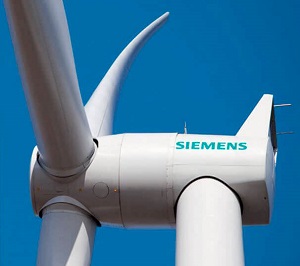 So, the demand for wind turbine technology is high. Siemens is one of the top 10 manufacturers and have just announced a new offshore wind turbine. The new turbine is named the SWT-8.0-154 and uses Siemens' direct drive wind turbine technology. The technology is used in both onshore and offshore applications. When the direct drive technology was announced in 2011, the engineers said that they had revolutionized the entire wind market.
So, the demand for wind turbine technology is high. Siemens is one of the top 10 manufacturers and have just announced a new offshore wind turbine. The new turbine is named the SWT-8.0-154 and uses Siemens' direct drive wind turbine technology. The technology is used in both onshore and offshore applications. When the direct drive technology was announced in 2011, the engineers said that they had revolutionized the entire wind market.
Siemens says installations of the new turbine will kick off in early 2017. The turbine will produce 10% more energy annual energy production due to being an 8MW model. This is a step up from their 7MW model. Siemens currently operate 1,240 direct-drive onshore turbines and 150 offshore turbines.
Michael Hannibal, CEO for Offshore at Siemens' Wind Power and Renewables Division said: "We are relentlessly working on the levelized cost of energy, and the offshore direct drive platform enables us to do this with the lowest possible risk. With the same proven reliability as our successful 6 and 7MW models, the SWT-8.0-154 will be the new benchmark for gearless offshore wind technology on the market."

Siemens' direct drive technology is respected as one of the more innovative wind turbine technologies available today. However, what about a wind turbine with twelve blades?
The twelve-bladed behemoth has been proposed by a company named Vestas. The company needs to prove to investors that twelve blades are better than three and can equate to more efficiency. The company has had the proposal on ice whilst they figured out how a twelve-bladed turbine would actually work. The worry is that if one set of blades stops working or an internal error occurs, then the entire thing will stop functioning.
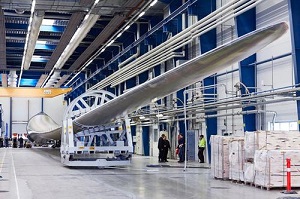 Perhaps the answer isn't more blades, but, maybe longer blades. A wind energy firm named Adwen and LM Wind Power have created the world's longest wind turbine blade. The blade is 88.4 meters long and will fit on Adwen's own AD 8-180, 8MW, wind turbine.
Perhaps the answer isn't more blades, but, maybe longer blades. A wind energy firm named Adwen and LM Wind Power have created the world's longest wind turbine blade. The blade is 88.4 meters long and will fit on Adwen's own AD 8-180, 8MW, wind turbine.
Roel Schuring, the CTO of LM Wind Power said: "The rotor is the motor and to put it simply, longer blades extract more energy from the wind. Increasing the annual energy production from each offshore wind turbine is a key driver to reduce the levelized cost of offshore wind energy which is decisive for a large-scale deployment. The blade is the single most influential component for increasing energy yields and its design and aerodynamic features can make a huge difference for the turbine's power production."
Source: Clean Technica
The Economics and Statistics Administration within the United States' Department of Commerce have sent out their report titled Women in STEM: A Gender Gap to Innovation. The report alludes to what multiple reports in the first six months of 2016 have alluded to -- there are not enough women in science, technology, engineering and mathematics workforces. The Economics and Statistics Administration have crunched the numbers and have provided a clear picture of how big the STEM gender gap is.
According to the report:
- Although women fill close to half of all jobs in the U.S. economy, they hold less than 25 percent of STEM jobs. This has been the case throughout the past decade, even as collegeeducated women have increased their share of the overall workforce. Women with STEM jobs earned 33 percent more than comparable women in non-STEM jobs – considerably higher than the STEM premium for men. As a result, the gender wage gap is smaller in STEM jobs than in non-STEM jobs. Women hold a disproportionately low share of STEM undergraduate degrees, particularly in engineering. Women with a STEM degree are less likely than their male counterparts to work in a STEM occupation; they are more likely to work in education or healthcare.
- Women hold a disproportionately low share of STEM undergraduate degrees, particularly in engineering.
Source: http://www.esa.doc.gov/
 The results are even worse in India. Kelly Services, a global workforce staffing industry who specialize in engineers and accountants, have released a report titled Women in STEM. The report indicated that 81 percent of women who have STEM jobs in India quit their jobs 10 to 15 years into their careers.
The results are even worse in India. Kelly Services, a global workforce staffing industry who specialize in engineers and accountants, have released a report titled Women in STEM. The report indicated that 81 percent of women who have STEM jobs in India quit their jobs 10 to 15 years into their careers.
The report reinforces the sentiments of a recent report by Engineers Australia that showed that the women who do make it into engineering workforces usually leave within 10 years. The report also shockingly stated that one percent of Australian women past the age of 50 years old are currently working in the engineering industries.
"To begin closing the talent gap, we must create an inclusive environment that facilitates greater engagement and retention of females in STEM. We must make it a priority to eliminate bias and barriers, to deliver top-down support and institutional accountability," Kelly Services said.
One of the reasons the Deccan Chronicle gives to make sense of the grim statistics in India, is that women in India find it difficult to balance both taking care of family and managing employment at the same time. The website defines this as the 'double burden syndrome'. Other reasons for drop-out numbers around the world are directly related to gender bias and gender discrimination within engineering industries.
What is the way forward for getting more women into STEM careers? Kelly Services writes that mentorship and increasing diversity levels. The raising of diversity scores in tertiary institutions was recently celebrated after Dartmouth College produced more female graduates than men graduates. In 2016, in Dartmouth engineering courses, female attendance made up 54 percent of the class.
Making a diverse workforce in engineering still has a long way to go in the global context, however, any progress is progress.
The Association for Advancing Automation has released a white paper that deals with how robotics is fueling the next wave of productivity and job growth in the United States. Some industries are experiencing the robot revolution first hand, where industrial robots are starting to take jobs away from humans. Automation in industrial sectors is constantly improving the efficiency of several manufacturing industries The white paper calls the recent development in robotics an "integral part of manufacturing's redemption".
The National Association of Manufacturers says that in the United States, the manufacturing industry employs 12 million Americans, representing 9% of the country's workforce. What the Association found was that in 2001, when industrial operations started seeing more robotics involved, employment rose. Similarly, in the years 2010 to 2014, the amount of robotics the U.S. bought skyrocketed, however, employment numbers actually rose. The concern being that more robots being sold would equate to more retrenchment, but the opposite has been true for the United States.
The Association for Advancing Automation said: "There are three important trends that must be examined to clarify how robotics is shaping the U.S. manufacturing industry: the reversal of offshoring, the use of automation for repetitive and dangerous tasks, and the domestic shift to a service economy. The industry also has an opportunity to impact future growth through new education initiatives."
 Using automation in manufacturing operations has ensured that some companies stay afloat due to the efficiency of the robots. The white paper quotes a Drew Greenblatt, a CEO and owner of Marlin Steel. He says that automation has had a positive impact on his company. He has apparently doubled his workforce and employed engineers in his company since going automated. Allowing automation to take care of the repetitive task and letting humans work on higher quality work has saved his company from bankruptcy.
Using automation in manufacturing operations has ensured that some companies stay afloat due to the efficiency of the robots. The white paper quotes a Drew Greenblatt, a CEO and owner of Marlin Steel. He says that automation has had a positive impact on his company. He has apparently doubled his workforce and employed engineers in his company since going automated. Allowing automation to take care of the repetitive task and letting humans work on higher quality work has saved his company from bankruptcy.
Even Deloitte got in on the action of measuring how technology is apparently stealing our jobs and found similar results ; automation has created more jobs than it has destroyed. The researchers studied every level of automation that stretched as far back as 1871.
"The dominant trend is of contracting employment in agriculture and manufacturing being more than offset by rapid growth in the caring, creative, technology and business service sectors. Machines will take on more repetitive and laborious tasks, but seem no closer to eliminating the need for human labour than at any time in the last 150 years," the researchers said.
The Association for Advancing Automation concluded the current problem with education as a result of automation. They wrote: "The majority of the careers that the skilled labor force has been seeking in recent years are service-related, which suggests a harsh reality: Manufacturing is no longer one of the nation's most coveted career paths for those entering the workforce."
And that is their warning to students. Their warning is that if people want to work in the service-related fields they will find that automation and robotics are slowly taking over those industries and are not beneficial to try and get into anymore. Rather a STEM-focused career path that teaches you skills that an automated process won't be able to replace.
Source: Robotics Tomorrow
The safety helmet seems to be the worldwide symbol for engineers. If you go to Google Images and type the word 'engineers', almost every single image that comes back is of people with hard hats on. To an average joe, engineers wear hard hats in their occupations. However, a new report indicates that engineers are tired of the hard hat as the worldwide symbol for engineering. Engineers want the symbol to be changed in educational works that emphasize the stereotype that all engineers wear hard hats.
 The report is known as the Sainsbury Management Fellows' 2016 Hard Hat Index that measures the number of times a hard hat appears in editorials or advertisements. In 2014, the Hard Hat Index saw a 20% increase in the number of hard hats in "key engineering publications". In 2014, hard hats were featured in 229 advertisements and 143 editorials.
The report is known as the Sainsbury Management Fellows' 2016 Hard Hat Index that measures the number of times a hard hat appears in editorials or advertisements. In 2014, the Hard Hat Index saw a 20% increase in the number of hard hats in "key engineering publications". In 2014, hard hats were featured in 229 advertisements and 143 editorials.
SMF say they invented the Index to show how pervasive the use of hard hats has become in "influential media". They believe that the image "limits the profile of engineers". So, has the Index worked and minimized the amount of stereotypical hard hats in mainstream media? The answer is: No. This year alone, hard hats have appeared 257 times in engineering media. The number is the highest it has been since the SMF Index was launched in 2013. The current Index shows that images of hard hats have risen 39% since 2013.
The President of SMF, David Falzani said: "The Hard Hat Index points out how the engineering community is choosing to represent itself in terms of image and emotional value. Generations Y and X are far more image and brand conscious than before. Image and emotional value are vital in our ability to attract, inspire, recruit and retain bright young people. This is a serious national challenge which we must all embrace."
SMF actually conducted a workshop with engineering graduates to discuss the use of the hard hat as a symbolic image for engineering. In the group of respondents, there were seventy students from the Royal Academy of Engineering. They showed the students 30 different advertisements that featured hard hats in them. Only 20 percent of the ads received positive feedback. Meaning, engineers feel underrepresented by advertising of engineers.
The question that remains is how to visually show what an engineer looks like. The multiple industries engineering caters to makes it impossible to secure one image.
"The Hard Hat Index is therefore designed to highlight how our industry is representing itself. It is disappointing to see that despite the question of the engineering brand being debated in the engineering media over the last 18 months, the hard hat representation in editorial is on the increase. This begs the question whether our industry is open to reinvention in order to persuade the public that engineering is an exciting, dynamic and rewarding profession," Falzani said.
Industrial control system cybersecurity continues to be an elusive concept to companies who have not made advancements in securing company assets that are connected to the internet. The guys at Automation World have you covered, though. They have compiled a very simple 3 principle approach to protecting your industrial operations that will or do function with the Industrial Internet of Things.
One of the issues for industrial operations is that attacks can be performed on the Supervisory Control and Data Acquisition (SCADA) systems. A study by Booz Allen Hamilton showed that the US Department of Homeland Security dealt with 295 industrial incidents in 2015. Energy utility companies  were the most heavily attacked. Other companies included manufacturing facilities in the car, electrical and metal industries. The utilities said the attacks were by ransomware criminals that tried to access their enterprise networks. The director of Industrial Security at Booz Allen says enterprise networks are the first to get hacked. Once enterprise networks have been accessed, the actual operational technology of an industrial operation is targeted. Once the operational technology is targeted, things like SCADA systems and other industrial control systems are at the mercy of hackers. The report indicated that more hacking incidents happened in 2015 than any other year, however, 2016 could eclipse that statistic.
were the most heavily attacked. Other companies included manufacturing facilities in the car, electrical and metal industries. The utilities said the attacks were by ransomware criminals that tried to access their enterprise networks. The director of Industrial Security at Booz Allen says enterprise networks are the first to get hacked. Once enterprise networks have been accessed, the actual operational technology of an industrial operation is targeted. Once the operational technology is targeted, things like SCADA systems and other industrial control systems are at the mercy of hackers. The report indicated that more hacking incidents happened in 2015 than any other year, however, 2016 could eclipse that statistic.
Automation World's 3 point policy for securing industrial systems with cybersecurity is as follows:
- A top-down security approach with centrally-defined plant-wide policies that are automated to ensure consistent shieldign of all field assets.
- A focus on security essentials, i.e. securing what matters and doing the basic things right, repeatedly, to shield industrial assets from risk.
- Prioritize protection of field assets, which are key for production safety and integrity.
Eli Mahal, who wrote the three point cybersecurity policy, works for a cybersecurity company named Next Nine. He says: "Both the NIST framework and NERC-CIP v5 say that asset identification is foundational for knowing what must be protected. A comprehensive and up-to-date asset inventory is vital to developing and maintaining an appropriate defense of an industrial network and infrastructure. The owner/operator needs clear visibility into what devices are on the network; what they communicate with and how; the characteristics of the devices; and the presence of any known vulnerabilities.
Some companies believe that employing air-gapped industrial equipment is the answer. This would include using equipment that has never been exposed to the internet or a previous network. This is not a viable option due to the Industrial Internet of Things surging forward and bringing in a new era of efficiency for industrial operations.
However, those companies shouldn't have to worry because now there is a gap in the market for private cybersecurity firms. Post-Quantum, a cybersecurity firm in the United Kingdom just secured $10.4 million of investment. The company specializes in cybersecurity for "enterprises and organizations", which include: banks, government, and healthcare. Another company this week named Darktrace secured funding of $65 million, and another company named SecurityScoreCard received $20 million. The cyber-protection of industries has never been more lucrative for engineers than it has been today.
"Organizations should address the security essentials and focus on doing the basic things right, such as applying qualified operating system patches and anti-virus signatures, collecting and analyzing devices logs, and scanning IP address ranges to look for unexpected changes," Mahal concluded.
Australia's construction market is doing quite well. In the Performance of Construction Index, Australia rose by 6.5 points in June, giving them an average score of 53.2. Their score in May was 46.7. A healthy score is above 50.0 which separates the line of expansion versus contraction. Therefore, Australia's construction is looking healthy. Recent reports indicate that the Australian construction industry has taken a dip since March 2013. Sourceable confirmed that construction activity had dropped by 25 percent since 2013 when it was at its peak. Nonetheless, the latest construction numbers are quite surprising.
 The numbers were crunched by the Ai Group, as usual, delivering the news that Australia's construction industry was at the highest level in ten months. The report showed that all construction subsectors (house building, commercial buildings, and engineering construction) have improved in June. Expert analysts say they haven't seen this impressive of a turnaround in many years. They say the improvement could be signaling further improvements in the months in the remainder in the year.
The numbers were crunched by the Ai Group, as usual, delivering the news that Australia's construction industry was at the highest level in ten months. The report showed that all construction subsectors (house building, commercial buildings, and engineering construction) have improved in June. Expert analysts say they haven't seen this impressive of a turnaround in many years. They say the improvement could be signaling further improvements in the months in the remainder in the year.
The AiG manufacturing index reported more worrying numbers, however. Manufacturing in Australia fell to 51 from 53.4 in April, during May. However, being above the 50 mark means manufacturing is still expanding in the country, which is a good sign. Australia has not dipped below the 50 mark since September 2006.
"The residential sub-sectors of house and apartment building were the standout performers," said Peter Burn, the head of public policy at Ai Group. However, the commercial engineering construction has been seeing drops in new orders. House and residential is carrying all of the weight for the construction industry in Australia.
A country that couldn't brag as much, was Germany. Their Purchasing Managers' Index fell from 52.7 in May to 50.4 in June. Despite the drop, Germany has been faring well. Oliver Kolodseike, an economist at Markit said: "The recovery in Germany’s construction sector appears to be losing its legs at the end of the second quarter, with latest survey results pointing to a marked slowdown in growth of German building activity. The PMI is now close to a level that is normally consistent with a stagnation of construction output, dragged down by declines in both commercial building and civil engineering activity. Although housing shortages and the inflow of refugees should help maintain growth of residential building activity in the near-term, companies were the least optimistic about their future since the end of last year."
Source: The Construction Index
The global smart energy market will see seven vendors rising up above the rest, to capitalize on the new era of clean energy production with an added layer of digitization as the Industrial Internet of Things. The seven leading vendors were determined by a study done by Technavio, which considered energy companies that provided services in "smart-grid, HEMS, digital oil fields" and leading solar technologies, all in the name of clean and smart energy production. The efficiency of these power companies was also considered. Technavio estimates that these seven vendors will lead the market from 2016 to 2020. Thus, we begin our series titled Global Smart Energy 2016 to 2020 and catch up with these seven energy companies to see the work they are doing in energy sectors and to see what qualifies them as the top vendors for global smart energy.
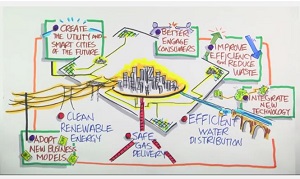
Itron
Itron is a company that will play a big part in Internet of Things connected smart grids in the near future. The company provides end-to-end smart grid and smart distribution solutions for electric, natural gas and water applications. The company says that in the current global energy market, more needs to be done than just securing a smart-grid. They believe that with the oncoming interconnectedness from the Internet of Things will ensure that a new smart distribution system can be created.
They are coining a new term pertaining to global smart energy. They're calling it the 'Active Grid'. This grid layout will combine the smart grid and smart distribution solutions in one well-oiled machine. The company explains that clean renewable energy, safe gas delivery, and efficient water distribution working in tandem with each other and with the digital connection of the Internet of Things will help the company provide efficiency and reduce waste. The company says through combining these solutions, the smart-cities and the smart utilities of the future can be born.
 "Smart grids are no longer enough. While they collect and move more data than ever, in today's fast-paced world, more data doesn't mean better outcomes. We need a grid and distribution networks that are more than smart. With the right technology and analysis, applied in the right places, we can create something beyond the smart-grid. We can create the Active Grid," Itron said in a promotional video.
"Smart grids are no longer enough. While they collect and move more data than ever, in today's fast-paced world, more data doesn't mean better outcomes. We need a grid and distribution networks that are more than smart. With the right technology and analysis, applied in the right places, we can create something beyond the smart-grid. We can create the Active Grid," Itron said in a promotional video.
Itron outlines a simple three-point plan for their proposal of the Active Grid:
- A network fueled by an open, standards-based and the interactive network that uses intelligent technology. This would relate to Industrial Internet of Things connected technologies.
- Automation with devices, sensors, routers, and applications will make real-time analysis and the making of decisions far easier. No unnecessary data will apply.
- Machine to machine learning and problem-solving that makes sense. However, the active grid will have human intervention where necessary.
The company says an active grid connected to the Internet of Things and connecting distribution systems to an eco-system of interconnectivity will mean that problems and outages will be detected 50 percent faster. Smart metering, smart cities, connected by a smart distribution system is Itron's aim for a future with cleaner energy, cleaner water and an efficiently run country.
Source: Itron
A wearable. A word that has a very simple definition. It is an item/s that can be worn. When we think about wearables, we think about the current applications available in the media; smart-watches, head-mounted VR gear etc. However, wearable technology has become valuable to engineering industries. Wearables for industrial operations, coupled with modern day automation with the Internet of Things , will ensure that everyone attached to a project or a factory - or even a mine - will all be on the same page with data that is freely and immediately available.
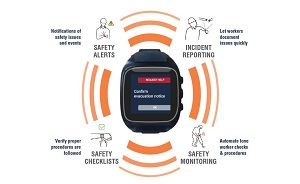
A 3D real-time industrial operations dashboard is available from a company named Vandrico Inc. The company currently shows off how it interconnects miners and engineers, but can also be used for other industrial endeavors. It connects all the engineers and workers attached to an industrial operation across platforms. Smart watches, smartphones, tablets, and laptops. The company calls it Real-Time Operational Intelligence. As an example, Vandrico shows off their smartwatch technology, which accounts for on-site safety. Once a fire alarm goes off at an industrial operation, the smart watch can ask questions like: "Are you safe?", "Is everyone near you safe?" This way a fire or industrial problem can be quickly contained and lives can be saved. This assists with site security and safety, something that engineers need to focus on as they begin a project and whilst the project is ongoing. Their safety-smart-watches were announced last year, with the help of a company named Illumiti. They call the watch the MineSafe smartwatch, which also assists with the response-time of life-threatening situations in mines. It could ensure that safety in mines is paramount, especially in a mine collapse.
According to the companies the full list of uses the smartwatch has are:
- Safety alerts: Notifications of safety issues and events
- Incident Reporting: Let workers document issues quickly
- Safety monitoring: Automate lone worker checks & procedures
- Safety checklists: Verify proper procedures are followed
The company says their wearable technology would be able to save mines millions and could even save lives.
IoT-connected dashboards for industrial operations could be the most useful way of keeping a close eye on the efficiency of a workforce, and can give engineers a good idea of how far a project is.
Vandrico says their platform can be used for many different applications:
- Virtual barricades: Alert miners that they are near an unsafe area and prevent them from going there
- Lone worker: Individual miner and engineer tracking for safety check-ins and immediate ramifications for missed check-ins
- Real-Time Safety Reminder & Safety Forensic Logs
- Real-Time Incident Reporting: Any injuries can be reported immediately. Any mine maintenance issues can be reported instantly
- Mementos: The miners can deliver voice notes or text messages to other workers that would improve efficiency.
- Automated coordination of work orders: A checklist of what needs to happen during the day. A virtual "to-do" list.
Source: Vandrico
Online education has grown in leaps and bounds in the last decade. However, the legitimacy of gaining an online tertiary degree has been questioned by several employers all around the world. The issue being that the trusted universities sometimes don't offer their most important courses online. What we're left with are online speciality courses that don't hold much water in the world of employment, but are encouraging to an employer, granted you have a degree from a respected university that you physically attended. However, the legitimacy of online degrees is finally beginning to become visible to high-ranking universities.
 Experts agree that online education's feasibility in securing employment will be happening in the next five years. According to a report by the BBC, due to the successes of initiatives like Coursera, full degrees could make their way to the internet. Coursera offers short courses from the world's top universities, namely, MIT and Stanford. However, Daphne Koller, chief executive of Coursera says that undergraduate degrees could be happening within five years time. The platform currently has 20 million students registered and the list of universities that contribute now sits at 145 universities.
Experts agree that online education's feasibility in securing employment will be happening in the next five years. According to a report by the BBC, due to the successes of initiatives like Coursera, full degrees could make their way to the internet. Coursera offers short courses from the world's top universities, namely, MIT and Stanford. However, Daphne Koller, chief executive of Coursera says that undergraduate degrees could be happening within five years time. The platform currently has 20 million students registered and the list of universities that contribute now sits at 145 universities.
"Will it be fully online? Or will it have some residential components? That remains to be seen," Loller said. "It's the perception we need to break, it's not the technology that's been the barrier."
In the upcoming years, we will see more and more online degrees being announced by several different institutions. Recently, the Engineering Institute of Technology announced that they had been given the green-light to host four engineering degrees that can be studied online. The institution will be providing three-year BSc (Bachelor of Science) programs in: Mechanical, Electrical, Industrial Automation and Civil/Structural Engineering.
"They've got some enormous opportunities [for students]. They're online, we have a dedicated learning coordinator, highly experienced instructors as characteristic ingredients of this program," said the Dean of Engineering at the Engineering Institute of Technology, Steve Mackay. "The idea is that if you've done an advanced diploma or a diploma you will get some credits towards the BSc."
 Mackay says the BSc will allow you to practice as a technologist, which you can then take further and study a masters degree to become a full-blown engineer. He also says that after a lot of work the institution was able to get the degrees accredited and are looking forward to seeing student enrollments from Australia and the 130 other countries they offer the degrees to.
Mackay says the BSc will allow you to practice as a technologist, which you can then take further and study a masters degree to become a full-blown engineer. He also says that after a lot of work the institution was able to get the degrees accredited and are looking forward to seeing student enrollments from Australia and the 130 other countries they offer the degrees to.
For further inquiries into the Bachelor of Science programs you can check out the institution's website: EIT
Koller says that time-consuming campus-based degrees do not leave room for the improvement of qualifications and that online studies are the only way. She says: "Many working adults have obligations, they have a job, a family, a mortgage, they can't go back to school."
Charles Muwandagara, an engineer who is currently working on power stations across Africa, recently graduated with his advanced diploma in mechanical engineering from the Engineering Insitute of Technology (EIT). When asked about his diploma and whether he felt it was a necessary addition to his skillset through online education, he said: "It was very practical. To run a project you need those basic skills."
Online education is rapidly progressing. Most interestingly, engineering higher education seems to be progressing faster than some might have estimated. Soon, technologies such as Coursera and EdX and more will be offering full-blown degrees and giving more people access to the best education for their buck. And who knows, maybe even free education to those in need.
Source: BBC / Engineering Insitute of Technology
Amazon has announced the winner of a competition held to find the next big warehouse/factory robot arm picker. Teaming up with Germany's RoboCup, Amazon urged engineers to create robot item-pickers in a competition that "aimed to strengthen the ties between industrial and academic robotic communities. The winners would receive $25,000 for first place, $10,000 for second and $5,000 for third. Amazon is currently investigating how to further automate their packaging plants and automate their delivery systems as well.
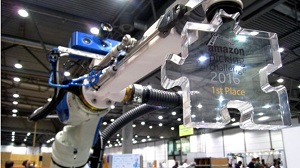 Tye Brady, the chief technologist at Amazon Robotics told the BBC: "Our vision is humans and robots working shoulder to shoulder. It was inspiring to see 16 top teams with so many different approaches to the same problem, and we also saw the advancements robotic technology has made since last year."
Tye Brady, the chief technologist at Amazon Robotics told the BBC: "Our vision is humans and robots working shoulder to shoulder. It was inspiring to see 16 top teams with so many different approaches to the same problem, and we also saw the advancements robotic technology has made since last year."
The top 3 were:
- Team Delft (Dutch team) - First place
- NimbRo picking - Second Place
- MIT - Third Place
The teams had to demonstrate sophisticated tasks that included a host of products strewn inside a box that the robot arm picker had to pick up. Team Delft's robot was able to successfully complete a pick in 30 seconds, cementing them as the winner of the competition. The items included some of Amazon's very own products, including clothing, DVD boxes, and bottles of water. It is clear Amazon wants to see which system they might be able to employ in their own factories. Amazon recently purchased Kiva Robotics for $775 million and has started to employ automated processes in their factories. Bloomberg confirms that Amazon utilizes 30,000 of the Kiva robots in its warehouses. Employing picker and packer robots would further automate warehouses that are already seeing a lot of automation. The Kiva robots will allegedly save Amazon $2.8 billion alone.
Team Delft's robot appears to use a suction gripper to lift the items and keep them attached to the robotic arm. It then releases the object into the box it has been programmed to store the objects in. The robots use artificial intelligence to learn how to pick and place more efficiently as it works. According to The Verge, Team Delft's robot has a failure rate of 16.7 percent.
The competition emphasises how advancements of robotics have led to the replacement of humans. The repetitive nature of picking and stowing will now be done by robotics instead of being done by humans.
Source: The Guardian
Another day, another robotics market research report. Robotics is an immensely important engineering industry that has the power to influence many other industries. Robotics has forever changed the industrial world. BCC Research, an industrial research firm, has published their latest investigation into Robotics: Technologies and Global Markets.
The report focuses on six different industries that robotics have been most prominent in:
- Industrial robots
- Professional service robots
- Military robots
- Domestic service robots
- Security robots
- Space robots
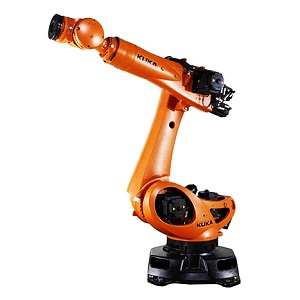 The researchers say the robotics market reached $24.9 billion in 2015 and is expected to earn up to $25.9 billion by the end of 2016. In 2021, the researchers estimate that robotics would have earned $31.5 billion, which would translate into a compound annual growth rate of 4%. The biggest market, that will hold $12 billion of the $31.5 billion will be the Asia-Pacific market. Not surprising, seeing as though China is actively seeking to purchase robotics companies as recently seen with Midea Group buying stakes in Germany's Kuka Robotics.
The researchers say the robotics market reached $24.9 billion in 2015 and is expected to earn up to $25.9 billion by the end of 2016. In 2021, the researchers estimate that robotics would have earned $31.5 billion, which would translate into a compound annual growth rate of 4%. The biggest market, that will hold $12 billion of the $31.5 billion will be the Asia-Pacific market. Not surprising, seeing as though China is actively seeking to purchase robotics companies as recently seen with Midea Group buying stakes in Germany's Kuka Robotics.
Professional service robotics made up 30% of the global robotics market in 2015. Of that 30 percent, the industries that had the most service robots were:
- Healthcare: More than 50 percent
- Aerospace manufacturing: 10%
- Education and research: 6%
- Governmental service robots: 6% The rest: Food, pharmaceutical, agricultural, construction, consumer products, fuel processing etc
James Wilson, a BCC Research analyst attached to the report, said: "In the most generic sense, collaboration is when multiple workers perform tasks on the same work piece. Collaboration is familiar to those who create information products, the most common of which are financial instruments including car loans and mortgages in which computers, not comptometers, calculate payment schedules. A machine capable of sharing workspace with humans and simultaneously working on the same work piece represented the opening of a new industrial era in which robots were seen less as tools and more as a co-worker."
According to a recent report by the International Federation of Robotics, the sales in industrial robotics were also published, representing the other 70% of the robotics market:.
The industries that reported the most sales in industrial robotics were:
- The automotive industry: 95,000 units purchased in 2015
- Metal industry: 63% more purchases than 2014
- Plastics and rubber industry: 40% more robots purchased in 2015
- Electronics industry: 16% rise in industrial robot purchasing
The global smart energy market will see seven vendors rising up above the rest, to capitalize on the new era of clean energy production with an added layer of digitization as the Industrial Internet of Things. The seven leading vendors were determined by a study done by Technavio, which considered energy companies that provided services in "smart-grid, HEMS, digital oil fields" and leading solar technologies, all in the name of clean and smart energy production. The efficiency of these power companies was also considered. Technavio estimates that these seven vendors will lead the market from 2016 to 2020. Thus, we begin our series titled Global Smart Energy 2016 to 2020 and catch up with these seven energy companies to see the work they are doing in energy sectors and to see what qualifies them as the top vendors for global smart energy.
GE Energy (General Electric)
The company has set a Guinness World Record for the most efficient combined-cycle power plant in the world. The plants use steam and gas turbines to produce energy with little to none carbon emissions. Heavy duty gas turbines are being utilized more than ever due to the political discouragement in using fossil fuel technologies. The company, in collaboration with EDF Energy, opened the plant in France on June 17, 2016. The plant is able to achieve full output in 30 minutes, providing energy to those who need it with minimal outages. It converts gas to electricity with 62.22% efficiency. 680,000 homes will be powered by the plant. It's called the HA gas turbine and produces 605 MegaWatts at a low cost. Combined-cycle power plants are able to produce 50 percent more electricity than the conventional power plants utilizing fossil fuels today.
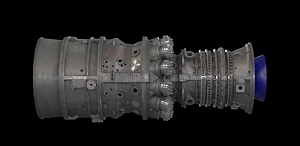
GE recently launched GE Ventures. The "offshoot" of GE announced that they had purchased a stake in a German battery company named Sonnen GmbH. The joint venture between the two companies is a strategic move for GE, who want to create what they call the "utility of the future".
The company has also recently announced IoT-enabled air conditioners that consumers can monitor and change with a smartphone app.
Engineers have to account for noise in modern day engineering. The health of ears need to be protected. In the same breath, engineers need to ensure whatever they are manufacturing doesn't produce enough noise pollution to damage the hearing of consumers. Even the manufacturing machinery needs to abide by certain noise parameters. Engineers these days are told that less noise means healthier workers and makes a manufactured product that much more attractive in sales.
The control of noise lies in the measurement of A-weighted decibels, abbreviated as dBA. A quick measurement chart you can follow:
- Decibels are just audible at 10dBA
- Soft whispering = 30dBA
- A quiet office = 40dBA
- Normal talking voice = 65dBA
- Hand dryers in public restrooms = 80dBA. This is the level at which ear protection becomes necessary.
- Manufacturing machinery = limit of 85dBA - These are noise levels that can cause damage to ears
- A rock concert = 120dBA
- Thunder clap = 130dBA
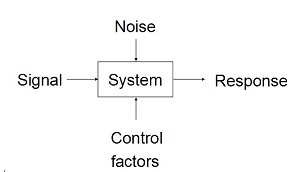
Mackay says that says that some machinery manufacturers are not too keen to cut the noise down, indicating that kitchen appliance manufacturers usually amp up the amount of volume their products produce so that it sounds more powerful to the consumer.
"Noise cancellation is a technology which is employed very widely. But, it really [only] works with short point sources at low frequencies. So, a very large surface operating at a whole spectrum of frequencies is very difficult to apply noise cancellation to," said Mackay.
He also touches on automobile manufacturing, that prides itself on loud cars and loud motorbikes. However, there is an exception. Electric vehicles.
 In 2014, the European Union decreed that in the future, electric vehicles would need to emit an artificial noise that would signal pedestrians and other motorists that they were on the road. This is due to the very quiet nature of electric vehicles. A car powered by batteries won't make much noise at all. The EU is calling the artificial noise generators "Acoustic Vehicle Alerting Systems".
In 2014, the European Union decreed that in the future, electric vehicles would need to emit an artificial noise that would signal pedestrians and other motorists that they were on the road. This is due to the very quiet nature of electric vehicles. A car powered by batteries won't make much noise at all. The EU is calling the artificial noise generators "Acoustic Vehicle Alerting Systems".
Chris Davies, a Liberal Democrat in the European government in 2014, spoke to the Daily Mail, saying: "Quiet electric cars could become a common sight on our roads in years to come but we have to ensure that this doesn't jeopardise the safety of blind and partially-sighted people. ‘The acoustic warning devices will make a sound very similar to that of cars with a regular combustion engine so that people will be able to clearly hear these vehicles, allowing them to judge how safe a road is to cross.
However, in the world of construction and manufacturing, there are still high decibel levels of noise happening which can damage both the hearing of engineers and the manufactured product. Therefore, Mackay says: "In your next engineering design, think about noise. Think about how to reduce the effect on your wonderful clients, you'll probably have a far happier client."
The Royal Academy of Engineering, the Institution of Mechanical Engineers, the Institution of Civil Engineers and a list of 33 other engineering organisations have banded together after the results of the Brexit Referendum. The super-group of engineering industries want to collectively pressure the British government into making a good deal with the EU, for the engineering sector. As Britain leaves the European Union, all of the warnings that were issued before June 23rd need to be double checked to measure what kind of damage engineering sectors will experience as a result of the exit.
 Nigel Fine, Chief Executive of the Institution of Engineering and Technology said: "This is a period of huge change and uncertainty so it’s imperative that we work together to ensure the best outcomes for UK engineering, which is so important to a vibrant and successful economy. We will do everything we can to ensure the interests of engineers and UK engineering are represented as strongly as possible."
Nigel Fine, Chief Executive of the Institution of Engineering and Technology said: "This is a period of huge change and uncertainty so it’s imperative that we work together to ensure the best outcomes for UK engineering, which is so important to a vibrant and successful economy. We will do everything we can to ensure the interests of engineers and UK engineering are represented as strongly as possible."
Negotiations need to be held to ensure that engineering industries are protected under the 'severance package' Britain might get once they fully leave the EU. According to Engineering & Technology, the group represents 450,000 engineers and will continue to collaborate to ensure that British engineering remains an influential force in the world.
Together, the industries represented make up 27% of the United Kingdom's GDP. The group has noticed that the uncertainty caused by the 'leave' vote has already swayed investors opinions. Notably, Siemens immediately suspended UK wind power plans once the results of the referendum were unveiled.
Head of External Communications at Siemens, Anne Keogh, said: "Siemens has always made it clear that this was a decision for the British people and their view must be respected. As a global business with significant, long-term investments in the UK and high local value creation, Siemens is not so much exposed to negative effects that we might see. Nevertheless, the government must now move swiftly to unify and agree the nature of the UK’s relationship with the EU and other trading partners, creating clear roadmaps to encourage future investment."
Engineers are saying they have never been in a situation that requires so much "strategic collaboration" between engineering industries. Unfortunately, uncertainty was unavoidable with a 'leave' vote. The super-group will now measure how powerful the vote is, in terms of how damaging it might be to the engineering sector.
“We are rising to this challenge and pooling our resources to provide government with the best advice and access to our networks to inform its planning and leadership role. We are building a new, proactive framework for making engineering advice available to government on these critical matters for now and for the duration of the change process," said Phillip Greenish, Chief Executive of the Royal Academy of Engineering.
3D printing - or rather 'additive manufacturing - has seen a boom in the engineering industry recently. We have reported on the multiple ways additive manufacturing is being used in engineering industries. Chinese construction companies are printing 400-square-meter villas in 45 days, mining equipment like longwall shearers have been printed in the mining sector, 3D printing of metal tools, etcetera. It is clear that additive manufacturing - whilst being fairly new to some industries - is here to stay.
In 2015, Michael Breme, the head of Audi tool design described how 3D printing was benefitting their business. He said: "A brand new fascinating technology has made its way to tool making. 3D printing. It enables us to produce the parts faster and more cost-effectively. For example, with a 3D printer, we don't have any waste like we would with metal cutting, which means we're faster and more cost effective." So, 3D printing making its way into engineering is both useful for the speed of production and ensures that costs are minimal as well.
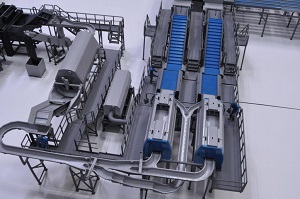
Another novel, innovative way of using current 3D printing technologies that might excite the civil engineering readers, is 3D printing blueprints. Architects are now printing realistic models of blueprint plans and working with design engineers to measure the feasibility of a construction project. This is something that could be eliminated with augmented reality head-mounted technology and AutoCad software, however, it shows impressive dedication from engineers who want to 3D print models of what they could one day be building.
An agricultural engineering company (Wyma Engineering) showed off a 3D printed blueprint of its fruit sorting industrial machine that can be seen to the left of this article. The 3D printer plastic that was used to perform the 3D model blueprint was called Accura Mix. You know, in case you want to get into the business of 3D printing all of your blueprints into models, to make it easier for the engineers to envision what the end product might look like. This way of printing 3D models enables engineers to show project investors the intricate details of a build and give them a clearer picture of what the construction might look like. This would eliminate some of the time spent 3D model building, and probably save some design engineers some sleep.
The Internet of Things. It's a buzzword that won't be getting old anytime soon. The Internet of Things will see everyday objects connected to cloud-based solutions, with the ability to interact with other devices or live alongside each other in an interconnected network. Now, the first country-wide Internet of Things networks are popping up globally.
The Netherlands have become the first country to establish a country-wide network dedicated to the future of connecting cars, smart-grids and smart-city applications to an interconnected cloud.
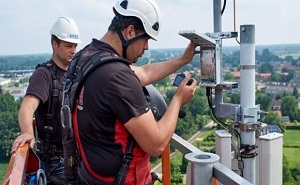
solution.
The network is being supplied by a telecoms company known as KPN. They are calling it the LoRa network.
Chief Operations Officer and a member of the Board of Management of KPN, Joost Farwerck, in a press release from the company, said: "Last year we identified an increasing demand for low-power network technology for Internet of Things applications. We are responding to this by choosing LoRa, so millions of devices can be connected to the internet in a cost-effective manner. In less than a year, KPN has implemented a network that allows us to satisfy this market demand."
KPN says there are 1.5 million devices ready to be connected to the network. Cisco, a company wanting to capitalize on internet of things technologies, has endorsed the LoRa-like networks by releasing a gateway and an adapter module that would allow their switches to connect to the unlicensed spectrum (LoRa network).
Following suit, South Korea has also launched its own commercial Internet of Things network. The network has been provided by SK Telecom and will reportedly be available for 99% of the country's population. The company says that the new network will assist with delivering data and analytics across cities. Some of the applications include:
- Electricity metering/Management: Keeping accurate track of the amount of electricity being used
- Water Metering/ Management
- Parking space tracking
- Bicycle tracking
- Infrastructure management
- Missing child tracking
The South Korean telecom launched the network six months ahead of the agreed upon date. Seems the Internet of Things just can't be contained. They are also used LoRaWAN (Long Range Wide Area Network) utilizing LTE-M infrastructure.
Lee Hyung-hee, President of Mobile Network Business at SK Telecom, said: "SK Telecom is proud to announce the nationwide deployment of LoRaWAN as it marks the first important step towards realizing connectivity between infinite number of things, going beyond the traditional role of telecommunications centered on connectivity between people. Going forward, SK Telecom will develop and offer a wide variety of IoT services designed to offer new value for customers, while working closely with partners including SMEs and startups to vitalize the IoT ecosystem."
A recent report by Markets and Markets focuses on electric substation automation. The report indicated that revenue growth in the market is expected to reach $48.25 billion by 2020. This would mean that a CAGR of 6.71% annually from 2013 to 2018 in the substation automation market. Another report recently released was the Global Substation Automation Market 2016 Industry Trends, Sales, Supply, Demand, Analysis & Forecast to 2021 released by QY Research Group that emphasized many of the same points.
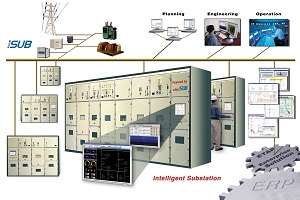
Markets and Markets wrote: "The prominent driver for the electric power substation automation market is the outdated energy infrastructure and growing influence of a smart grid infrastructure that demands a multifunctional solution complying with advanced communication protocols."
Smart-grid technologies were revealed to have produced a quarter of the global energy demand in 2015, according to a recent report.
The key players in the substation automation market were:
- ABB Ltd - Switzerland
- Siemens AG - Germany
- Alstom S.A. - France
- General Electric - United States
- Eaton Corporation - Ireland
- Schweitzer Engg Lab - United States
- Cisco Systems - United States
- Amperion - United States
- Schneider Electric - France
- Ingeteam - Spain
According to a separate report by the International Data Corporation (IDC) energy utilities will be investing $800 million into Internet of Things connected substation automation technologies in 2016. The investments would ensure that older substations retrofit new systems to benefit substations through automation.
The automating of substations will ensure efficiency and reliability of energy supply for utilities. Real-time analytics through Internet of Things connected technologies will also ensure that utilities can measure how efficiently they are providing their services.
IT professionals will also see more employment through utility-funded efforts into cybersecurity for automated systems. Cyber threats are very real in the substation automation market ; hackers and cyber criminals are capitalizing on the network weaknesses of internet-connected substations.
30 billion Internet-of-Things-connected devices are supposed to up and running by 2020. Some of these connected devices will be in the industrial automation industry, that will ensure manufacturing of goods never dies. But how many were running in 2015? A study conducted by an IoT analyst firm named Berg Insight has given a clear picture of just how many devices were connected. The report indicated that 14.3 million wireless IoT devices were connected in the industrial automation industry in 2015.
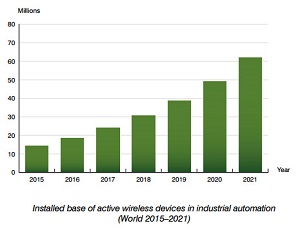
The report states that automation networks will grow at a CAGR of 27.7 percent, reaching 62 million Industrial Internet of Things devices by 2021.
The leading technologies that enable the wireless operations of automated factories are currently WiFi and Bluetooth technologies. Recently, an industry-wide architecture for narrowband internet-of-things two-way communication was secured by the 3rd Generation Partnership Project. Making the future of wirelessly connected devices that much quicker and efficient.
Johan Svanberg, a Berg Insight analyst, said: "Wireless communication and industrial IoT solutions can provide integration of different automation systems as well as enterprise systems which enables supply chains to be lean, even with a complex mix of products and output levels. Connected automation solutions also open up the possibility for entirely new business and service models which can give companies a much needed competitive edge in today’s manufacturing landscape."
Digital Trends reports that the three companies wanting to capitalize on Internet of Things infrastructure are Cisco, General Electric, and Verizon.
Business Insider confirmed that the industrial automation will be utilizing the most Internet of Things technologies, followed by government and the consumers coming in at third place. The market has been estimated to reach $6 trillion in the next five years.
Source: Berg Insights
Research and Markets have released their projections for the growth of global battery energy storage systems pertaining to the smart grid. The report investigates the growth from 2016 to 2020. What the report reveals is that the market for smart grid battery technology will grow at a CAGR of 72.91% from 2016 to 2020. The report was generated through industry analysis which included market analysis and interviewing engineering experts.
 The companies who took part in the report are some of the biggest engineering companies in the world today: Siemens, ABB, Samsung, GE-Alston, Bosch, AES Energy Storage, Bosch, Saft, and more. The report investigates the current market landscape, how batteries are segmenting the marketing, market drivers, impact of those drivers and key leading countries, amongst other things.
The companies who took part in the report are some of the biggest engineering companies in the world today: Siemens, ABB, Samsung, GE-Alston, Bosch, AES Energy Storage, Bosch, Saft, and more. The report investigates the current market landscape, how batteries are segmenting the marketing, market drivers, impact of those drivers and key leading countries, amongst other things.
The research was conducted by Technavio, who said: "With growth in population and increasing urbanization, there has been an increase in power consumption. Excess power consumption has led to power outages in many countries and has also resulted in heavy loads during peak hours. One of the reasons for power outages is the massive loss of electricity during its transmission and distribution from the power plants. The use of smart grid storage technologies enables reduction of such losses and improves the efficiency of power plants."
Lithium-ion batteries are used to store the energy that these renewable technologies generate. The battery market will grow at a CAGR of 72% from 2016 to 2020. Sayani Roy, an analyst at Technavio for smart-grid research, said: "The cost of Li-ion batteries, however, is a big challenge for the industry. Companies are focusing on developing cost-effective Li-ion batteries. The Li-ion battery cost has dropped at an average of 23% per year since 2010, while the energy storage system cost has also dropped at an average of 14% per year. This has led to a total installation cost reduction by 17%."
The global need for power will be increasing the desirability of smart-grid technologies, hence the rise in annual growth percentages. To see physical proof of this growth, REN21 conducted a report named the Renewables 2016 Global Status Report. The account said that 25 percent of global electricity capacity in 2015 was powered by renewable energy technologies.
According to their report, wind and solar made up 77 percent of the smart-grid technology that provided the global renewable energy in 2015. Hydropower was the second biggest contributor. The report also showed that global investment reached a "record level" in 2015. It showed that renewable technologies were fast replacing fossil fuel energy technologies.
Employment in renewables grew - excluding hydroelectric power - to 8.1 million jobs in 2015. Solar industries employed the most engineers, however, hydroelectric power supplied 1.3 million jobs by itself.
Source: Business Wire
Recruiters are increasingly noting that employers are demanding that engineering professionals possess skills sets (and indeed, experience) from information technology as well as show equivalent experience with specific software packages.
The beauty of being an engineering professional is that (with some motivation) you can quickly acquire most of these IT skills through the plethora of course sites ranging from virtually free MOOCs (massive open online courses) to smaller online courses (ranging from programming .NET, Python to IoT). Ranging from a modest cost to free. This does, of course, require motivation to stick to the course and complete it. But the rewards can be enormous in building on your engineering career.
Oddly enough, there is an ongoing disconnect between IT graduates and jobs (in Australia and the UK for example) where IT graduates are not easily securing employment with high unemployment rates for new graduates. Quite bizarre. And yet employers are screaming for more IT workers. It would suggest that the problem lies in these IT degrees not focussing on what the job market wants.
Increasingly the question today isn’t whether your engineering education and experience has a strong computing background; but what courses you undertook in programming and configuration and most importantly what experience you gained subsequent to your education.
An ongoing investment in your education is a work-in-progress – IT skills date quickly, as we all know. Whereas a few years ago, Java was all the rage – now it is likely to be Backend web design and scripting (with JavaScript).
780, 293 readers – www.eit.edu.au/cms/news/blog-steve-mackay
When designing a substation, engineers have to think about everything. They need to ensure the safety of a substation and need to ensure that at all times they would be able to control any situation that could put substations in danger. However, hurricane weather is one of those 'act-of-god' problems that can't exactly be predicted decades in advance. Therefore, once weather interferes, a different level of safety is exercised. Substation robots.
A utility named FPL, in Florida, have unveiled their substation robots that will ensure power is restored at a quicker rate once a storm hits the state. The robot has a GPS (global positioning 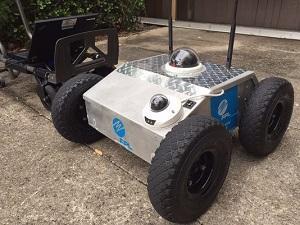
Bill Orlove, an FPL spokesperson, spoke to Florida Today, saying: "This is the latest tool that we have in our toolkit to help restore service to our customers when the storm passes." He also says that there are 600 substations in FPL's jurisdictional area and says that the robots would assist restoring power to those hard to reach substations.
The utility also plans to use drones to survey the surrounding areas of substations that may have been damaged by a storm.
"So with the substation robot, that will be pre-deployed so it'll be ready to once we're able to access it, the unmanned aircraft system or drone, that would be in an area where we've seen where there may be some damage, we would send people out there to fly it, it would both save us time and efficiencies, make it more efficient for us," Orlove added.
The novel idea could influence other utilities to follow suit and get their hands on their own drones and robots that could restore power to communities during storms, where sending engineers out is impossible.
It's hard to ignore the effects the Brexit is having on engineering. The first physical marks the Brexit referendum has made on engineering has been shown by Markit, a company that covers global market trends. As the referendum's results were unveiled at the end of June, the construction Purchasing Managers' Index fell to 46.0. To indicate how significant this is, one needs to consider that Britain's index sat at 51.2 in May. The numbers are now the lowest they have been since 2009, which were as low as they were due to the recession.
 "This is an absolutely dire survey that fuels serious concern over the construction sector...and can only intensify concern as to just how much the construction sector will be hampered by the Brexit vote," said chief UK economist at IHS Global Insight, Howard Archer.
"This is an absolutely dire survey that fuels serious concern over the construction sector...and can only intensify concern as to just how much the construction sector will be hampered by the Brexit vote," said chief UK economist at IHS Global Insight, Howard Archer.
Tim Moore, economist at Markit, speaking to Bloomberg, said: "Construction firms are at the sharp end of domestic economic uncertainty and jolts to investor sentiment, so trading conditions were always going to be challenging in the run-up to the EU referendum, However, the extent and speed of the downturn in the face of political and economic uncertainty is a clear warning flag for the wider post-Brexit economic outlook.”
Commercial building and home building was the hardest hit, however, civil engineering seemed to be stable. Markit said it was the first instance since April 2013 that the index had fallen below a 50 level. Companies want to stay above 50, due to 50 being the level that divides "contraction from expansion."
We've also recently reported that Britain's energy policy might also be damaged by the Brexit, however, no solid facts will be available until a new Prime Minister is appointed.
Markit points out that construction makes up 6 percent of Britain's economy. However, manufacturing in the country is said to be undamaged by the Brexit vote, as far as the preliminary investigations can see.
"The vast majority of June's survey responses were received ahead of the EU referendum, so the worry is that the ensuing political turmoil will hit construction spending decisions for some time to come," Moore concluded.
So, more woes for Britain as leadership falls away and uncertainty spreads. The question is, is engineering completely doomed in the country? We'll keep our eye on the situation and provide the cold, hard evidence as it is presented to the people of Britain in one of the most controversial political moves of all time.
Thirty football fields in size. 500 metres wide. A marvel of civil engineering. It's the Five-hundred-meter Aperture Spherical Telescope, also known as FAST, and the construction is complete. The final touches are happening and it will be fully operational in September. The Xinhua News confirmed that the final 4,4450 panels were positioned in the center of the dish.
Chinese scientists had the idea for the telescope back in 1994, and now it has been completed. Engineer Zhu Boqin immediately began surveying land to decide where the telescope should be built. He eventually found a "round depression

embraced" by hills in China's Guizhou Province and subsequently decided that that was the perfect place. The engineer said that the site's surroundings provided a perfect platform that facilitated the right amount of radio silence for the telescope. There are no towns in a 3-mile radius. The only problem was that the round depression had a village in the middle of it. The residents were relocated in 2009, and then the project really started gaining traction. The telescope is a global collaboration between the National Astronomical Observatories of the Chinese Academy of Sciences (NOAC) and Australia's Commonwealth Scientific and Industrial Research Organisation (CSIRO).
What is the telescope being used for?
Survey neutral hydrogen in distant galaxies and detect faint pulsars (highly magnetised balls of neutrons)
More than 2,000 pulsars so far said to have been detected
Improve the chances of detecting low frequency gravitational waves
Help in the search for extraterrestrial life
Source: Xinhua, South China Morning Post
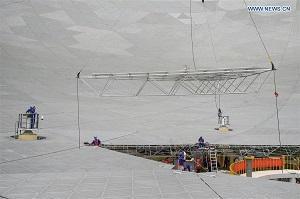 Talking to CCTV, Yue Youling, associate researcher of National Astronomical Observatories, said: "Understanding the fundamental physics of pulsars will help us understand the Big Bang. Now we only know what happened after the Big Bang, everything before that relies on our calculation. Therefore, there are a lot of uncertainties."
Talking to CCTV, Yue Youling, associate researcher of National Astronomical Observatories, said: "Understanding the fundamental physics of pulsars will help us understand the Big Bang. Now we only know what happened after the Big Bang, everything before that relies on our calculation. Therefore, there are a lot of uncertainties."
It cost a total of $185 million to construct.
NAN Redong is the general engineer and chief scientist on the FAST project. He said: "FAST will enable Chinese astronomers to jump-start many scientific goals, such as surveying the neutral hydrogen in the Milky Way. detecting faint pulsars, and listening to possible signals from other civilizations. It's time for China to have its own big telescope."
That's right. The Chinese want to contact civilizations hidden in the cosmos, or pick up their communications that they have been sending our way. You know, amongst other great uses the telescope offers. Nonetheless, scientists would be nowhere without engineers. They have built one good-looking telescope. and might just built the greatest chat room between civilizations.
Some jobs are just not going to come back. Those were the words spoken by Barack Obama at a recent town hall meeting when talking about how automation is changing employment in the United States of America. Recently, we reported, that Germany had pulled ahead of the U.S. when it came to adopting new industrial automation technologies. Nonetheless, Obama assured the crowd that new jobs in new industries would be made available once the robots replace humans inside factories.
 Obama said: "But, I gotta tell you that the days when you just being willing able to work hard and you can walk into a plant and suddenly there's going to be a job for you thirty years of forty years, that's just not going to be there for our kids. Because more and more, that stuff's gonna be automated. And if you go into a factory that kid is going to need to know computers, or is gonna need to know some science and some math because they're not gonna be picking anything up they're just going to be working on a keyboard."
Obama said: "But, I gotta tell you that the days when you just being willing able to work hard and you can walk into a plant and suddenly there's going to be a job for you thirty years of forty years, that's just not going to be there for our kids. Because more and more, that stuff's gonna be automated. And if you go into a factory that kid is going to need to know computers, or is gonna need to know some science and some math because they're not gonna be picking anything up they're just going to be working on a keyboard."
Further northwards, the people of Canada, when asked whether or not they were worried about a robot taking their job, were revealed to be the most anxious. A staggering 81 percent of Canadians believe that a robot will replace them. Their anxiety is not unwarranted by any means because a recent report (The Talented Mr. Robot: The Impact of Automation on Canada's Workforce ) by the Brookfield Institute for Innovation + Entrepreneurship (BII+E) at Ryerson University in Toronto revealed that 42 percent of Canadian workers are in industries that will inevitably be replaced by robotics.
Creig Lamb, an advisor from (BII+E) was quoted by IT Business Canada, saying: "Overall we discovered evidence from both sides of the debate. While these technologies can potentially threaten existing jobs, it is also important to recognize that they are also significant job creators that have the potential to improve productivity and raise overall living standards.
 So, both Obama's U.S. and Trudeau's Canada are certain that new industries are coming. Australia wants to ensure that their future working force is completely ready for the changes automation is bringing. Experts are warning that education must change soon to teach new skills to young students who will be living in an automated, Internet of Things future.
So, both Obama's U.S. and Trudeau's Canada are certain that new industries are coming. Australia wants to ensure that their future working force is completely ready for the changes automation is bringing. Experts are warning that education must change soon to teach new skills to young students who will be living in an automated, Internet of Things future.
Educators are calling for "technical and social" skill teaching in a STEM-focused (science, technology, engineering and mathematics) environment that teaches students how to solve real life problems. This is to try and eliminate the workforce that concerns itself with learning how to do repetitive tasks that have now been replaced by industrial robotics.
A youth advocate spoke to Australia's ABC news, saying: "We've had incredible education in this country, but there is no-one that genuinely really thinks it's fit for purpose now and into the future...Australia is, right now, not prepared. We could start working with 12-year-olds today. By the time they've done six years of high school and they're 18, we could genuinely have changed their trajectory if we focused on some of these education changes that need to happen and set them up and Australia up for a very different future."
Source: ABC News / Engineering Career
Making the switch to renewable energy is slowly becoming easier and easier in a world that desperately desires progress in clean energy markets. Energy consumers want more control. Car manufacturers noticed this and companies like Tesla, BMW, Nissan and more, saw the gap in the market. Car manufacturers want to power homes and power vehicles in one all-inclusive, multi-faceted system. This future, cars manufacturers envision, all depend on lithium technologies. And more companies are jumping on the bandwagon.
Hanergy is the world's leader in thin-film solar power manufacturing and offers a range of solar photovoltaic packages that assist consumers in powering their households, allowing them to move further away from the utility grid. They also specialize in wind and hydropower generation. However, they are jumping into the vehicle game as well. The company has announced plans to release solar- powered electric cars. The cars have thin-film solar panels on the bonnet and on the roof, capturing the energy from the sun, converting it, and storing in lithium-ion batteries. This means that electric vehicle charging stations are essentially not necessary, granted there is enough sun to power the vehicle. However, the vehicle can still be charged via EV charging stations. They're calling it the "zero charge" feature, that they hope to improve in upcoming years.
powered electric cars. The cars have thin-film solar panels on the bonnet and on the roof, capturing the energy from the sun, converting it, and storing in lithium-ion batteries. This means that electric vehicle charging stations are essentially not necessary, granted there is enough sun to power the vehicle. However, the vehicle can still be charged via EV charging stations. They're calling it the "zero charge" feature, that they hope to improve in upcoming years.
The vehicles can currently drive 49 miles on a six-hour solar charge. A full charge via an EV charging station would see the vehicle doing 217 miles on one charge. The company says their current cells convert solar energy at 31.6% and will further increase that to 38% by 2020. By 2025, the company hopes to have 42% conversion and also hope that a fully solar-powered car could be a reality by then.
"Breaking the bottleneck of poor practicality of previous solar-powered vehicles, the four launched by Hanergy are the first full thin-film solar power vehicles that can be commercialised, redefining new energy vehicles," Hanergy said in a statement.
The company is also developing more efficient solar panels that can be put on buses, to make buses more energy efficient and reduce emissions.
Source: China Car News
Formula E is an auto-racing competition that uses only electric-powered cars. The battery packs inside the vehicles are developed by Williams Advanced Engineering that is housed inside a body shell named the Spark-Renault SRT 01E. The car goes 0 to 60 MPH in 3 seconds and can reach a maximum speed of 140 MPH.
The batteries were updated by Williams Advanced Engineering in what they called the 'season two' battery, a year ago. The engineers have said that they intend to deliver 850kWh of power, making the batteries 25% more effective than the first season of battery packs they designed.
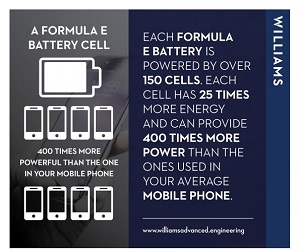 Now, the company is looking to repurpose the batteries once they have served their time in the Formula E vehicles. This is not a new idea, both Nissan and BMW will be re-using pre-existing lithium batteries once they reach their allotted legal lifespan. However, the lifespan of the lithium batteries used in cars is much longer than the legal lifespan of the vehicles, so they can be re-used once they are taken out of the vehicles. So, they can be re-used to provide energy storage to home units or other grid-balancing applications.
Now, the company is looking to repurpose the batteries once they have served their time in the Formula E vehicles. This is not a new idea, both Nissan and BMW will be re-using pre-existing lithium batteries once they reach their allotted legal lifespan. However, the lifespan of the lithium batteries used in cars is much longer than the legal lifespan of the vehicles, so they can be re-used once they are taken out of the vehicles. So, they can be re-used to provide energy storage to home units or other grid-balancing applications.
Therefore, Williams Advanced Engineering has announced that they will be re-using the batteries from their battery packs for home energy storage. Paul McNamara, the Techincal Director at Williams Advanced Engineering said: "For us, Formula E acts as a proving ground for higher batteries working in harsh environments. We have been able to fully test and validate our cooling systems, charge retention, and module design, and apply this technology to other projects outside of motorsport."
The battery parks hold a degree of fire-proof guarantee due to the work engineers had to do to ensure that the batteries did not explode during high-temperature races. The engineers have said that their batteries cool each and every cell

and control them to perform optimally. This bodes well for the company. Lithium-ion batteries, especially in the home storage unit market, could suffer from thermal runaway, which could cause the batteries to explode. However, McNamara says: "We can measure the battery's performance during each session [the race], and crucially the temperature of each individual cell to monitor how well thermal management is working." Hence, the engineers are confident that these batteries can be used for home energy storage, due to the thermal management and storing capabilities of their batteries.
"The championship really is a point of innovation for electric road cars. We've been able to test and validate various aspects, such as safety requirements, which are important considerations in the creation of electric vehicles. Things such as flammability, cooling, crash testing and potential leaks have all been evaluated in Formula E and now massively influence our design when developing systems for road cars," McNamara added.
All of this points to a more efficient and safer home energy storage unit. The Energy Storage Wars are quick becoming a game dominated by the automobile industry who ensure that their batteries are re-usable and efficient.
As renewable technologies make their way into our lives, we wonder how we will integrate the newly available technologies with our older technology that we still use to power our homes, our electronics and much more. Ir's hard to imagine calling some sort of firm and asking them to strip your house of its electricity and replace everything with solar cells tomorrow. So what we are left with is buying home energy storage units and saving ourselves some money by using less energy from the old grid in peak times.
Enter, the passive solar building. A building designed with solar energy in mind. A guest blogger for Sturdy Structural defines the passive solar building as a building designed with energy saving elements. We're talking the entire building. From the roof to the walls, to the floors. Solar passive buildings take the climate into consideration, using energy-saving applications to collect any and all energy that the sun is giving to the units.
To see the engineering design principles behind passive solar buildings, check this video out. This uses a house as an example, however, more and more business complexes are building with passive solar technologies in mind:
 Cornell University has also gotten wind of further development in passive solar buildings. The university has seen designs that could make their next dormitories the most energy-efficient dorms in the world. The dorms will be a $115 million project and stand at 26-stories high. The passive solar design will ensure that the building uses 70 to 90 percent less energy than buildings of equal size. The engineers behind the building say it will be the largest passive-house building in the world once it is completed. The building will have 550 solar panels on the roof that will power the building. The dorms will be air-tight and will prevent any outside air of making its way in requiring more energy to be used. Special vents will be used to funnel and filter fresh into air into the dorms.
Cornell University has also gotten wind of further development in passive solar buildings. The university has seen designs that could make their next dormitories the most energy-efficient dorms in the world. The dorms will be a $115 million project and stand at 26-stories high. The passive solar design will ensure that the building uses 70 to 90 percent less energy than buildings of equal size. The engineers behind the building say it will be the largest passive-house building in the world once it is completed. The building will have 550 solar panels on the roof that will power the building. The dorms will be air-tight and will prevent any outside air of making its way in requiring more energy to be used. Special vents will be used to funnel and filter fresh into air into the dorms.
Is it back to the drawing board for the engineers of Tesla? The company's self-driving technology has claimed its first victim. Tesla driver Joshua Brown, 40, has died in an accident caused by the self-driving technology inside the Model S. The car's self-driving technology was reportedly unable to recognise a white tractor trailer against "the brightly lit sky".
The technology that drives Model S cars is Tesla's own 'Autopilot' software.
"What we know is that the vehicle was on a divided highway with Autopilot engaged when a  tractor trailer drove across the highway perpendicular to the Model S," Tesla said in a statement. "It is important to note that Tesla disables Autopilot by default and requires explicit acknowledgement that the system is new technology and still in a public beta phase before it can be enabled."
tractor trailer drove across the highway perpendicular to the Model S," Tesla said in a statement. "It is important to note that Tesla disables Autopilot by default and requires explicit acknowledgement that the system is new technology and still in a public beta phase before it can be enabled."
Therefore, Brown knowingly put his life in danger once he had agreed to be part of the beta testing for the car. He also uploaded a video on YouTube showing the capabilities of the Autopilot feature. The video is unrelated to the crash. In the video, you can see the Autopilot feature physically dodging an oncoming truck that is merging into its lane:
"The customer who died in this crash had a loving family and we are beyond saddened by their loss. he was a friend to Tesla and the broader EV community, a person who spent his life focused on innovation the promise of technology and who believed strongly in Tesla's mission," Tesla added.
The crash comes at a time when automakers are reaching out to governments to show them that self-driving technology is the future. The crash will most likely be a reference point for critics who think self-driving technology is not ready for consumers. Now, the National Highway Traffic Safety Administration are investigating the Tesla crash. The group has said that in their initial reports, the car failed to apply the break due to the failure of the software to identify the white side of the tractor trailer.
The New York Times spoke to Karl Brauer, an analyst at Kelley Blue Book auto research. He said: "This is a bit of a wake-up call. People who were maybe too aggressive in taking the position that we're almost there, this technology is going to be in the market very soon, maybe need to reassess that."
Getting started with PLC programming could make you instantly more valuable as an engineer. Without PLCs, we would not be able to run our industrial factories that contribute to every economy all over the world. We need PLCs to use real-time software to monitor what happens inside an industrial system and control what the results will be. The running joke is that a person could come into contact with a PLC without even realizing it due to PLC uses in elevators, amusement parks, etc.
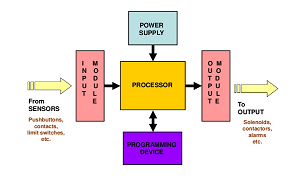
The PLC does a program scan that uses the entire system to scan for any incoming inputs and then does what it has been programmed to do. The scan takes one to two milliseconds. The scan happens as follow:
- The state of inputs (sensors, switches, pushed buttons) are scanned ; what the PLC needs to continue its scan
- The program is executed the pre-programmed logic of what the engineer wants the PLC to do with the input values
- Housekeeping of any devices connected or related to the PLC currently scanning
- 'Scan' the user's ladder logic left to right, sequencing through the 'rungs'
- Compute the results and write updates to the outputs
- Do diagnostics and if all is well, repeat the scan
Sometimes things can go wrong. Once a PLC malfunctions, the reasons might not be glaringly obvious. The PLC might need troubleshooting. Whether you are an engineer-in-training or a veteran, learning how to troubleshoot a PLC could save an industrial complex some money.
The Dean of Engineering at the Engineering Institute of Technology, Steve Mackay, has spoken about troubleshooting PLCs in the fortieth episode of his online series named the Engineering News Network. He says there are two areas that experience two types of faults in PLCs; internal and external. He says that eighty percent of the faults are usually the external components being faulty.
Internal
The internal issues within the PLC could relate to the decision-making CPU. The CPU is the main decision-making module within the PLC so it is a good idea to keep that as safe as possible. The communication ports are also important to keep safe consider that they can be connected to other PLCs and so they can both share data. Mackay says the earthing and grounding of the chassis that houses the PLC's elements could not have been done properly. He says: "That has to be done firmly and effectively. I've had many problems with that occasionally. Obviously, the power supplies to your PLC and the racks need to be continuously operative." The internal workings of the PLC could also be experiencing electromagnetic interference problems. "Those [electromagnetic interference problems] are intermittent, very difficult to trace but can be the cause for a lot of angst. Corrupted programs need to be looked for," Mackay added.
The batteries also need to be monitored to ensure that they are working all of the time so the PLC can function.
External:
"Check power supplies, the power, the fuses - you've got voltage continuously to your inputs," Mackay warned. Checking the wiring is also a good idea, noticing any corrosion could lead to thwarting a problem before it gets worse. He points out that there could be problems with a leakage current: "You think the input is off when its actually on. There is enough leakage current coming in that makes it appear off when its actually off."
This would be done by checking the digital outputs which would tell an engineer whether or not there are irregularities in the PLC's operations. This is done by using a meter to ensure that the proper voltage is coming out of a PLC.
Outside noise could also be a cause of a PLC malfunctioning. Ensuring that external sources are not producing noise is sometimes inevitable and so a filtering process then needs to be followed, by installing a noise filter.
Due to eighty percent of PLC faults being external, the PLCs are equipped with diagnostic LED indicators that will show whether or not a module is performing as normal or malfunctioning. Tracing the source of a fault is, therefore, easy to locate.
Finding the faults in PLC controllers are paramount to the continual operation of industrial automation to ensure that manufacturing plants work around the clock and work efficiently. Learning how to program is all good and well, however, learning how to troubleshoot is as important so that you can keep an industrial factory working optimally.
What's the difference between a Bachelor of Arts degree and a pizza? A pizza can feed an entire family.
Yes, we've all heard the joke and been subjected to the scorn of students who believe their degrees are more superior when compared to humanities degrees. It is no secret; universities are filled with some students who want to degrade certain degrees because they believe they are doing the degree that will guarantee them a job in their respective industry.
McGraw-Hill Education is an educational content publisher, considered as one of the big three educational content providers in the world. They have conducted a study titled the 2016 Workforce Readiness Survey that investigated which industry's graduates exuded the most confidence for postgraduate employment prospects. The study saw McGraw-Hill surveying 1,360 American college students between March 2016 and April 206. They interviewed both undergraduates and postgraduates.
 Group president of U.S. education for McGraw-Hill Education said: "Every college graduate deserves to enter the workforce with the confidence that their degree was worth the investment."
Group president of U.S. education for McGraw-Hill Education said: "Every college graduate deserves to enter the workforce with the confidence that their degree was worth the investment."
Their study revealed that 73 percent of students who study science, technology, engineering and mathematics (STEM) degrees believe they are the most employable. The more worrying statistic, however, is that 40 percent of "college seniors" think their "college experience" is instrumental in landing them a job. It's 61 percent of liberal arts students that think their degrees are not worth much once they graduate from university.
When students were surveyed about how they think technology factors into their studies, 85 percent of students said using technology in a lecture and using it as a study tool would further equip them to be attractive to employers. It seems students are hungry for practical work in classes, and less theory.
Furthermore, when graduated alumni were quizzed about the use of technology, 96 percent of them conceded that practically working with tangible technology would definitely lead to better employment options in the current climate of employable graduates. The scary bit is, McGraw-Hill Education says that the number of students actively using "workplace-related" technology is sitting at 26 percent.
Now for the nitty gritty. 62 percent of students said that if they had the chance to choose different major without the heavy tuition fees, they would have chosen different majors.
So, whilst STEM graduates are confident that they are entering the workplace, we're not certain that these graduates have the technical know-how for the industries they're going into. However, engineering students - based on the study - are definitely still the most confident that they have a definite part to play as an employed member of society.
The time for getting your qualifications in engineering for oil and gas facilities has never been better. Kenya is ready to construct a 538-mile crude oil pipeline that will provide oil for a new port being built on the Indian Ocean coastline. This was confirmed by a government official on Thursday.
Pipeline engineers are now in a unique position because they can now apply to be considered to design the front-end engineering design of the pipeline.
 Ministry of Energy and Petroleum Principal Secretary Andrew Kamau, speaking to Bloomberg said: "Once we have the pipeline design, the engineering, procurement and construction contract would be awarded in first quarter 2018. It would take us that long as we need environmental impact assessment study conducted to international standards for the project to be able to attract international funding."
Ministry of Energy and Petroleum Principal Secretary Andrew Kamau, speaking to Bloomberg said: "Once we have the pipeline design, the engineering, procurement and construction contract would be awarded in first quarter 2018. It would take us that long as we need environmental impact assessment study conducted to international standards for the project to be able to attract international funding."
The east of Africa is seeing unprecedented successes in oil and gas. This week, a huge helium reserve was discovered in ancient rocks in Tanzania. Kenya is in the eight spot for the list of African countries with the biggest economy. They could jump up a few spots due to this refinery being its first refinery for the country. It will be delivering its first oil in June 2017. Africa Oil has said the South Lokichar basin will produce approximately 1.63 billion barrels of oil. The pipeline is estimated to cost $2.1 billion to build, which is a modest number based on other countries in Africa that have built bigger pipelines. Kenya seems to be playing catch up.
If you're an engineering student currently studying towards your dream job, you've probably heard the question asked. When you make it into the industry, what is the dream company you'd want to work for? There's nothing wrong with setting your sights on some of the biggest engineering firms in the world because you never know when you might just get your big break. However, with thousands of fellow graduates getting their degrees and dreaming the same dreams, the industry is a tough one to compete in. Now, we have an idea of the most attractive engineering employers thanks to research group Universum. They have released their report titled The World's Most Attractive Employers 2016.
 The study was conducted on 267,084 engineering, business and IT students. The countries included in the report are: Australia, Brazil, Canada, China, France, Germany, India, Italy, Japan, Russia, the UK and the USA. The Executive Director of CNN Money, Lex Haris, spoke about the legitimacy of the report, saying: "This is a critical time for the global economy and today's grads are the future leaders that will determine its fate. We wanted to hear directly from them. And Universum's survey gives us direct access to thousands of students in a dozen countries.
The study was conducted on 267,084 engineering, business and IT students. The countries included in the report are: Australia, Brazil, Canada, China, France, Germany, India, Italy, Japan, Russia, the UK and the USA. The Executive Director of CNN Money, Lex Haris, spoke about the legitimacy of the report, saying: "This is a critical time for the global economy and today's grads are the future leaders that will determine its fate. We wanted to hear directly from them. And Universum's survey gives us direct access to thousands of students in a dozen countries.
So, we are looking at the millennials who are making their way into the respective engineering industries after graduating. Who do they want to work for? Here are the top 10 most attractive companies in engineering and information technology graduates' minds:
| Employer | 2015 | 2016 |
| 1 | 1 | |
| Microsoft | 2 | 2 |
| Apple | 3 | 3 |
| BMW Group | 4 | 4 |
| IBM | 6 | 5 |
| General Electric (GE) | 5 | 6 |
| Intel | 7 | 7 |
| Siemens | 9 | 8 |
| Samsung | 11 | 9 |
| Sony | 8 | 10 |
Analysts point out the interesting fact that energy companies are not attractive places for engineering students, as prospective places of employment. It's all about the tech companies in 2016, it seems. Analysts also say the results show that the millennials are aspiring to work for companies that seemingly have well-balanced work and lifestyle image. Interestingly, Google, Microsoft, Apple and BMW Group have retained their positions since last year, and IBM went up one position.
Rutgers University is New Jersey's own state university in the United States. The university's Department of Mechanical and Aerospace Engineering have shown off their new squishy robot. Yes, you read that right. To be more specific, the robot is considered to be a pneumatically driven elastomeric structure robot. The researchers have used the recent bendable robot technology to create a new robot that could have a host of applications in future industries where bendable, 'squishy' robots might be needed.
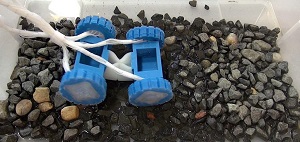
Bendable elements on robots are not a new innovation. They have been used in deep-sea coral expeditions for the purpose of handling coral with care, due to conventional robotic arms being too forceful. However, now the Rutgers researchers want to grow the innovation of soft robotics. The uses could range from sending the robots into rocky mountains or even driving the robots on different planets. The bendable, flexible material could be invaluable due to its ability to get through terrain that conventional robotics would not be able to do. See the video below to see how the robot navigates rocky terrain.
"If you build a robot or vehicle with hard components, you have to have many sophisticated joins so the whole body can handle complex or rocky terrain. For us, the whole design is very simple, but it works very well because the whole body is soft and can negotiate complex terrain," said Xiangyu Gong, an alumnus of Rutgers University in the mechanical engineering department.
The researchers used silicone rubber to build a wheel and axle assembly and used motors that are engineered to be devoid of metal. On top of that, the researchers had to assemble the vehicle to ensure its safety should it survive some sort of impact.
The team used 3D printers to print the rotors they used. As a result, the researchers were able to create 'squishy' pneumatic internal and external rotors. The external rotors were able to be used as wheels that the researchers used to design a four-wheeled rover robot.
"With no metal components and moisture-sensitive electronics on the vehicle itself, the vehicle is equipped with the actuators. [The rotors] function not only in a dry environment but also underwater as an amphibious vehicle," the researchers said. The researchers also showed that the robot could be dropped from eight times its height and survive the fall.
You've got your honours in chemical engineering, you're a junior engineer-in-training, you have less than 4 years of experience at a firm and suddenly you get fired. What do you do? Do you try and get your masters in chemical engineering? Do you try and find a job unrelated to engineering? What can be done? This was a question recently posed to anonymous engineers on a social media site and the reflection of the engineers currently working in the industry could inspire you to take control of your engineering prospects whether you're currently looking for a job or not.
 This year has not been kind to chemical engineers. We've seen chemical engineers with BTech degrees begging for jobs on street corners in South Africa, and now isolated incidents of firings of junior engineers in Canada. Employment in these fields is obviously few and far between in 2016. Nonetheless, employment issues are not limited to a certain type of engineering around the world, there are more industries that are struggling to accommodate engineers and the salaries that they demand. It's enough to stress out an educated, employable engineer.
This year has not been kind to chemical engineers. We've seen chemical engineers with BTech degrees begging for jobs on street corners in South Africa, and now isolated incidents of firings of junior engineers in Canada. Employment in these fields is obviously few and far between in 2016. Nonetheless, employment issues are not limited to a certain type of engineering around the world, there are more industries that are struggling to accommodate engineers and the salaries that they demand. It's enough to stress out an educated, employable engineer.
However, fellow engineers have offered their two cents on what to do to keep pushing for the engineering jobs, to ensure that you snag that job:
- Update your resume
- Update your LinkedIn Profile
The Dean of Engineering at the Engineering Institute of Technology (EIT), Steve Mackay, talks about constructing an engineering résumé in the fifteenth episode of the Engineering News Network. Here is a summary with some quotes from the Dean that might strengthen your curriculum vitae:
1. Focus on the job: "Most people think they can use a generic résumé because they are applying for lots of jobs but that is a sure fire path to destruction."
2. Make it simple: "Use simple English, lay it out simply, you don't have to address it to the village idiot but by the same token make it simple and easy and reasonable."
3. Grammar and spelling must be 100%: "Try and look at the English and the spelling to make sure it reads well."
4. Avoid excessive information: "The twenty page CV is long since gone. Employers don't have time to read."
5. Lots of white space and include an executive summary: Mackay says the executive summary should be included because it would state why you think you're the right pick for the job. "Try and be specific, give real employers names...who actually exist...plus your time with them and the job you had and the reason why you left," he said." He further says that you should try and avoid the 'job hopping' approach where your CV shows that you've only spent a few months at a place of employment because that doesn't look good at all.
6. Search for jobs you really want: "It's pointless going for a higher paying job if you hate it. Try and focus on the jobs you are looking for, make sure it's aligned with you."
7. Business strengths: Mackay says it should include 'business wins' from previous employment. Stating what kind of successes you achieved.
8. Experience: "No matter how many qualifications you've got, if you don't have the experience that matches up with the qualifications, you've got a pretty tough job selling yourself. Experience plus qualifications...great match."
- Send your CV everywhere: You never know where you might get a response from
- Find other employment in the interim: This is specifically for engineers who are between jobs or struggling to find the dream engineering job of their dreams. Sometimes, getting a job unrelated to your industry could give you more skills that will assist you once you get into your dream job
- Be prepared to relocate: Engineering experts say that limiting yourself to your city or town is a bad idea, especially if the industry is slowing down in a particular area.
The skills shortages in the STEM industries continue to plague the industry. However, engineers are being influenced to broaden their skill sets in entrepreneurship and other studies so that they are instantly more attractive to businesses who might be interested in hiring them. Keeping a job in the industry means continually learning and applied newly learned skills. It's never too late to learn some new tricks, according to the engineering aforementioned engineering experts.
How do you remain employable in the engineering industry? Let us know in our comments section.
Source: Reddit / The Engineering News Network
In March 2015 the Department of Trade and Industry in South Africa committed to funding a program that would see $67.6 million making its way into the industrial sector to create more black industrialists and engineers. The program was set up to further diversify the working force behind industrialists and engineers in the country.
Pricewaterhouse Coopers summarized the basic operations of the program. They wrote: "The concept of black industrialists refers to black people who are directly involved in the origination, creation, high-level ownership (>50%), management, control and operation of industrial enterprises that derive value from manufacturing goods and services on a large scale, thereby acting to unlock the productive potential of our country’s capital assets for massive local employment. Government is essentially looking for black industrialists who not only make long-term commitments to business but are also medium-to-long-term investors."
The sectors that will influence the employing of engineers in the country are as follows:
- Agro-processing
- Manufacturing
- Construction
- Clean technology
- Energy
- Mining
- Automotive components
 "We believe there is room for participation of many black entrepreneurs in the manufacturing sector as industrialists," said President of South Africa, Jacob Zuma. "They will be able to benefit from amongst others the incentives provided for in the industrial policy action plan and the host of manufacturing incentives that government provides. We believe the black industrialist policy framework is the right formula to transform the industrial landscape."
"We believe there is room for participation of many black entrepreneurs in the manufacturing sector as industrialists," said President of South Africa, Jacob Zuma. "They will be able to benefit from amongst others the incentives provided for in the industrial policy action plan and the host of manufacturing incentives that government provides. We believe the black industrialist policy framework is the right formula to transform the industrial landscape."
The program is geared towards encouraging black entrepreneurs to broaden their skill sets and find a future in engineering industries. It could also influence black engineers to pursue their dreams and get their competency in industries that are now seeing more job creation due to the move.
The Trade and Industry Deputy Minister, Mzwandile Masina, said that the program would ensure that more black leadership roles would be opened up in industries where black people are normally laborers and factory workers.
The diversification of employees in the STEM industry is an issue that South Africa takes seriously due to its unbalanced past.
Blog - Steve Mackay
EIT's Technical Director, Steve Mackay, enjoys keeping his blog up-to-date with useful tips and current industry matters for his fellow colleagues. He has a loyal and expanding following base reaching over 300,000 people around the world.
Student Stories
In this section you have the opportunity to read and listen to EIT students talking about the reality of the programs. Discussions are wide-ranging and include information about the study commitment required, the value of the qualification in their careers, the relevance of the subject matter, future pathways, and more. They provide valuable feedback for you to take into account before you decide to join one of our programs.
Career Information
Latest career information including industry research, podcasts, blogs, life hacks and general information about how you can make the most out of your career.
Education
Here you will find out more about the latest trends and developments within education worldwide, along with some helpful articles regarding study tips and keeping on track with your studies.
Developments
The latest innovation and inventions from the world of engineering can be found here. Learn about advances in technology and how they can make a real difference within your industry.
Announcements
Keep up to date with the latest announcements from the Engineering Institute of Technology. In this section you can read more about new courses, new recognition from professional bodies, our Excellence in Teaching Award, upcoming free webinars and much more.
Monthly Update
We understand that you may not have time to read all the articles that we post, so our monthly update gives you access to some fascinating articles which cover the best of the months news in a compact format.
